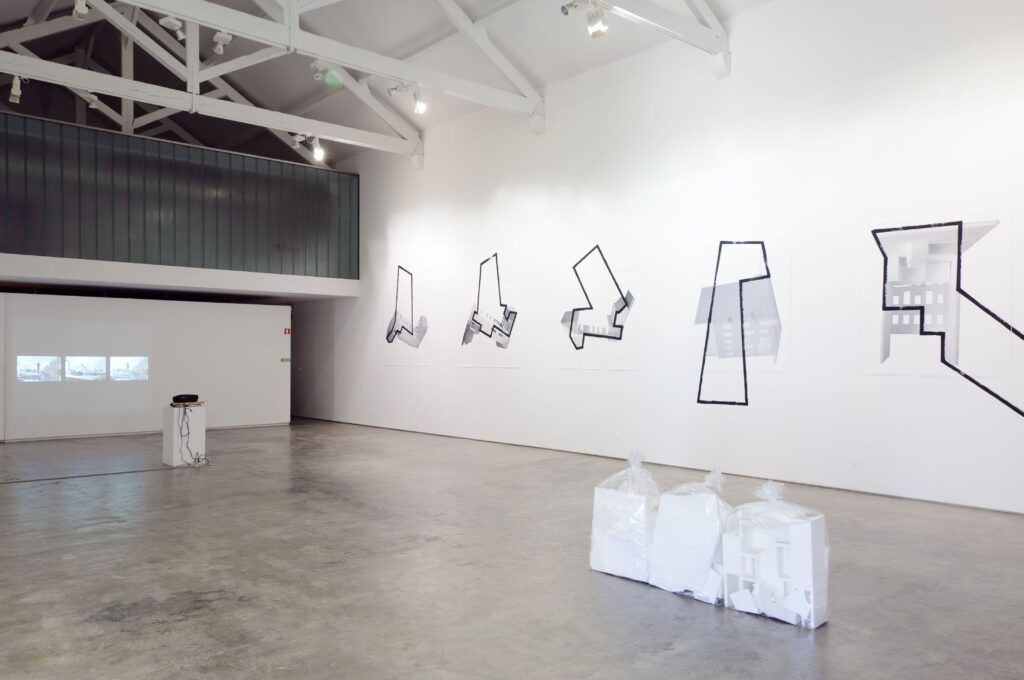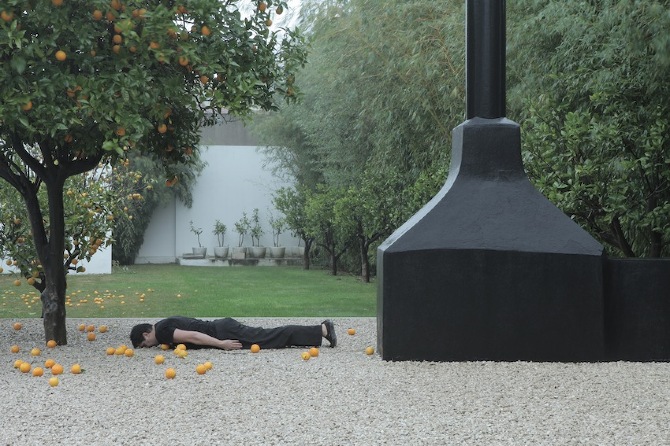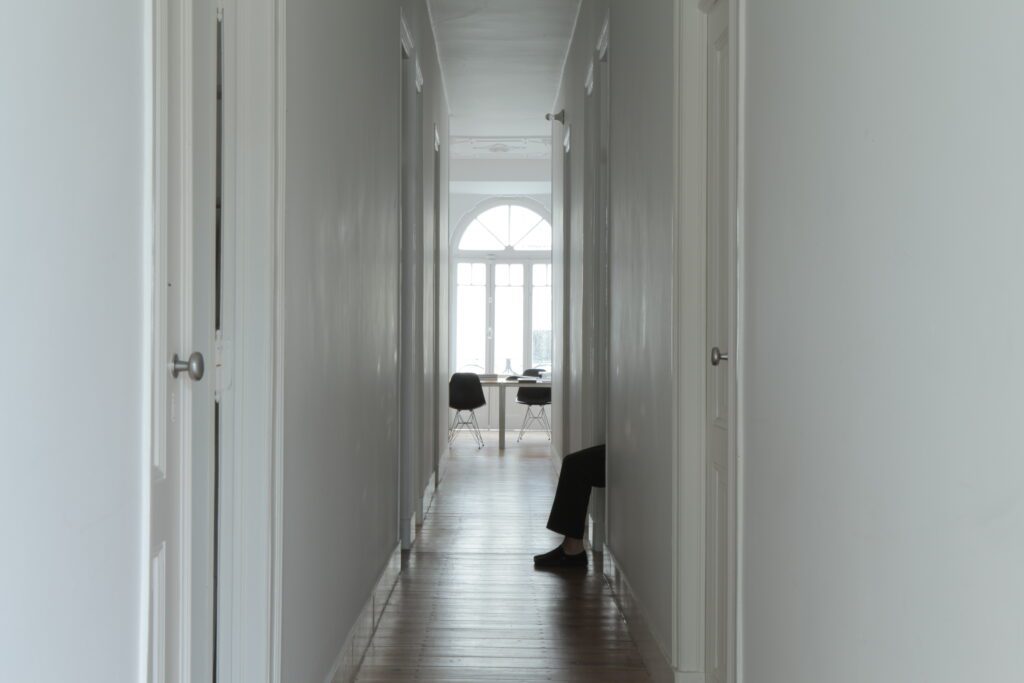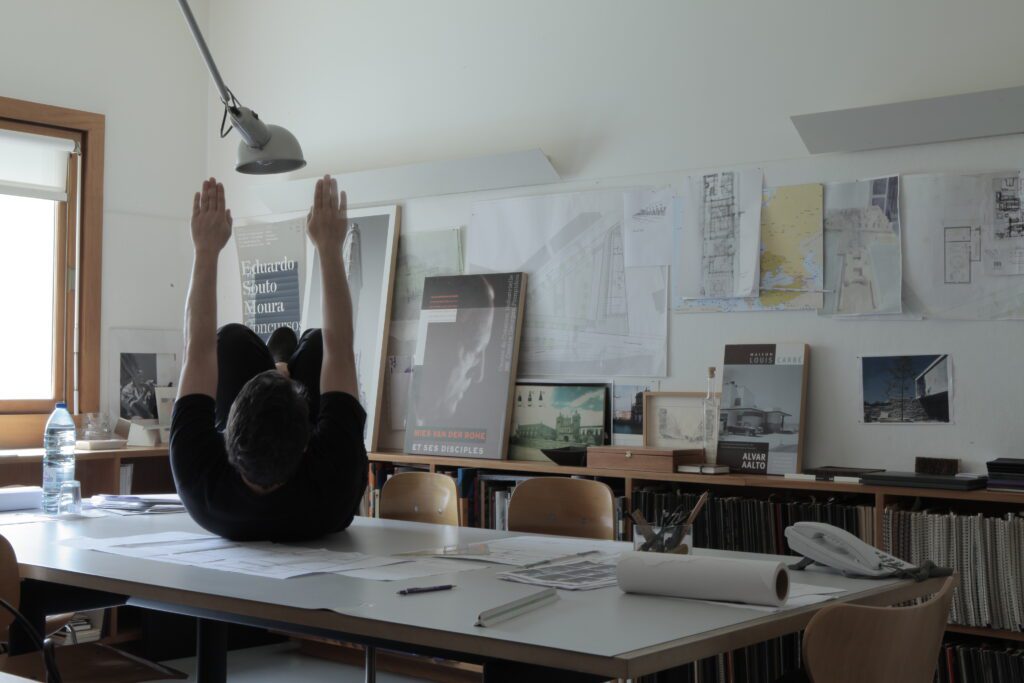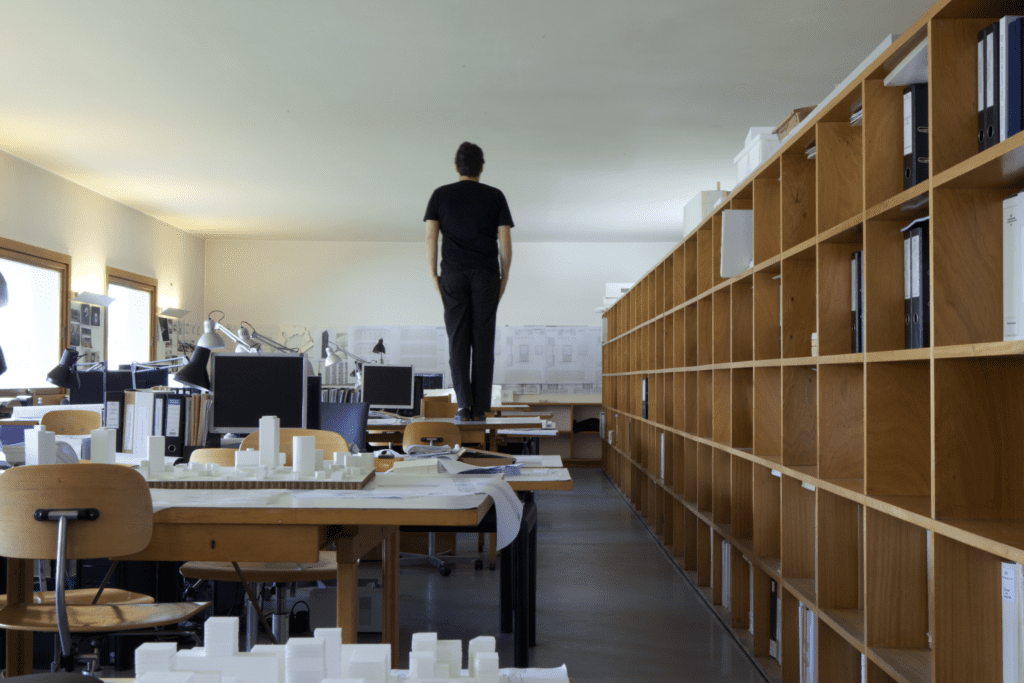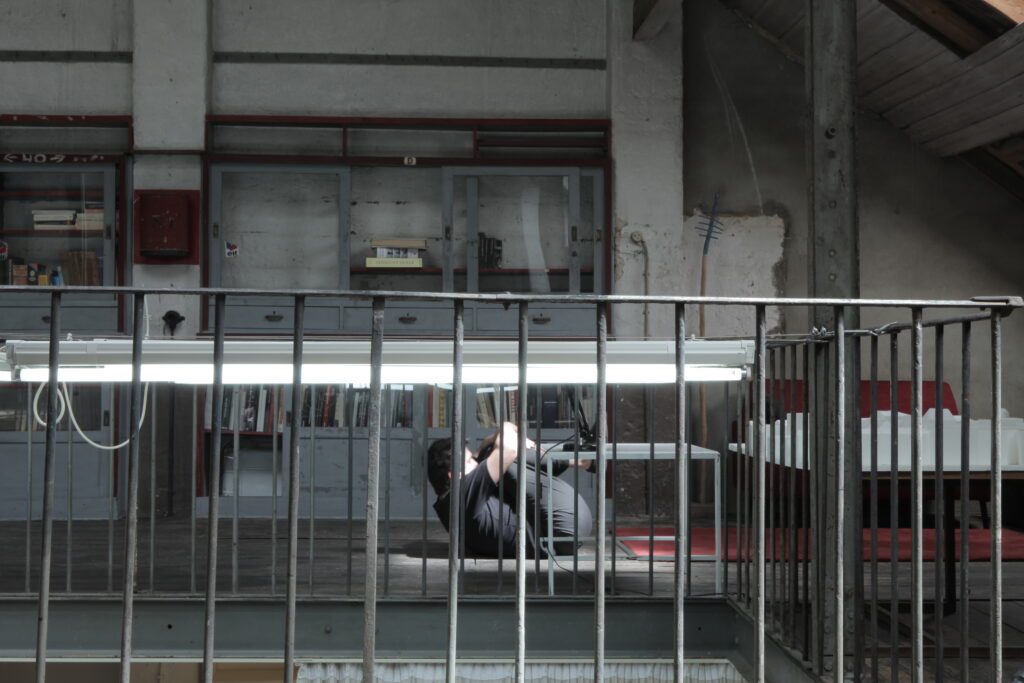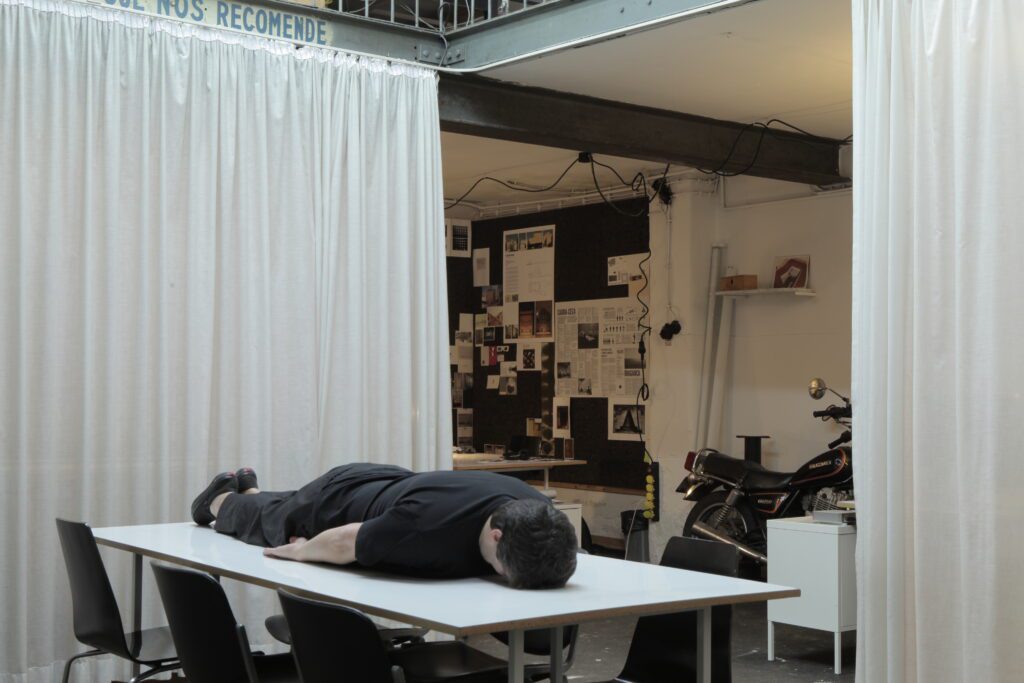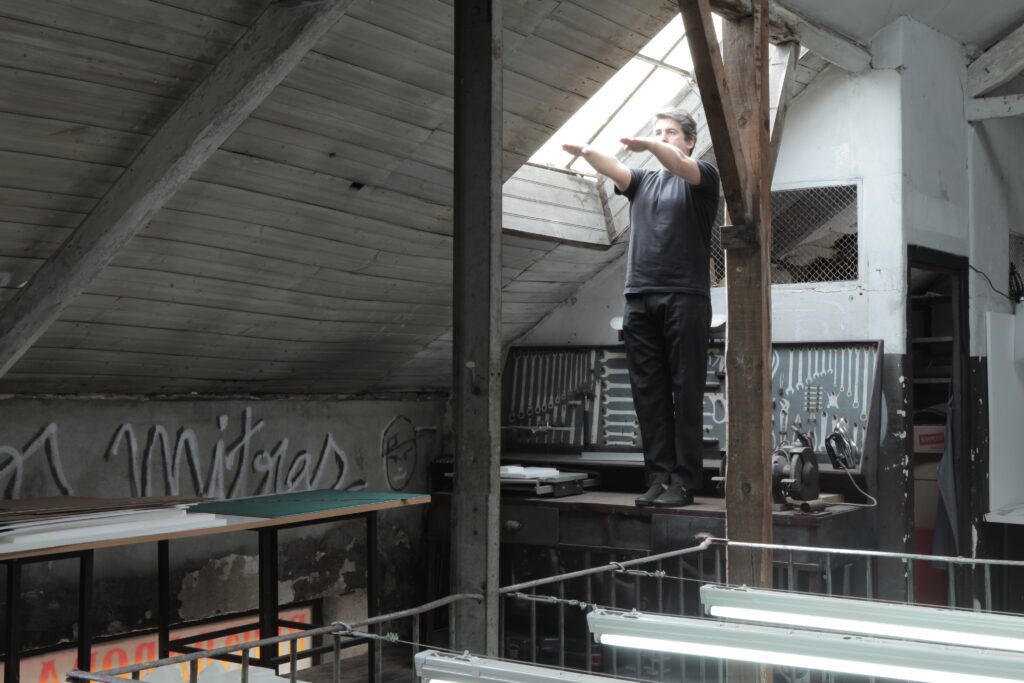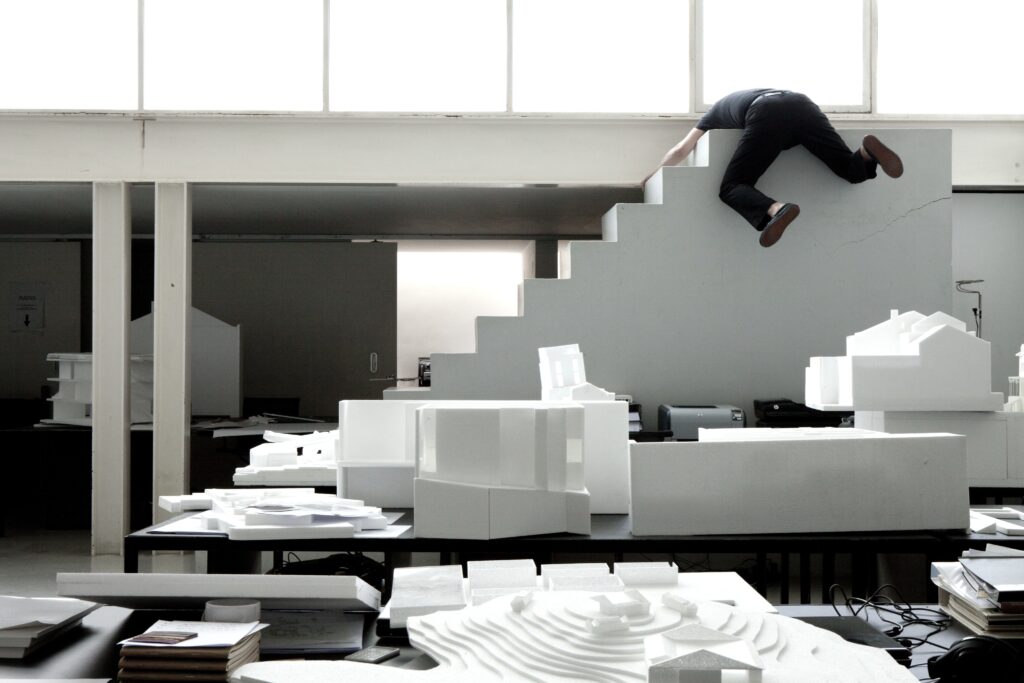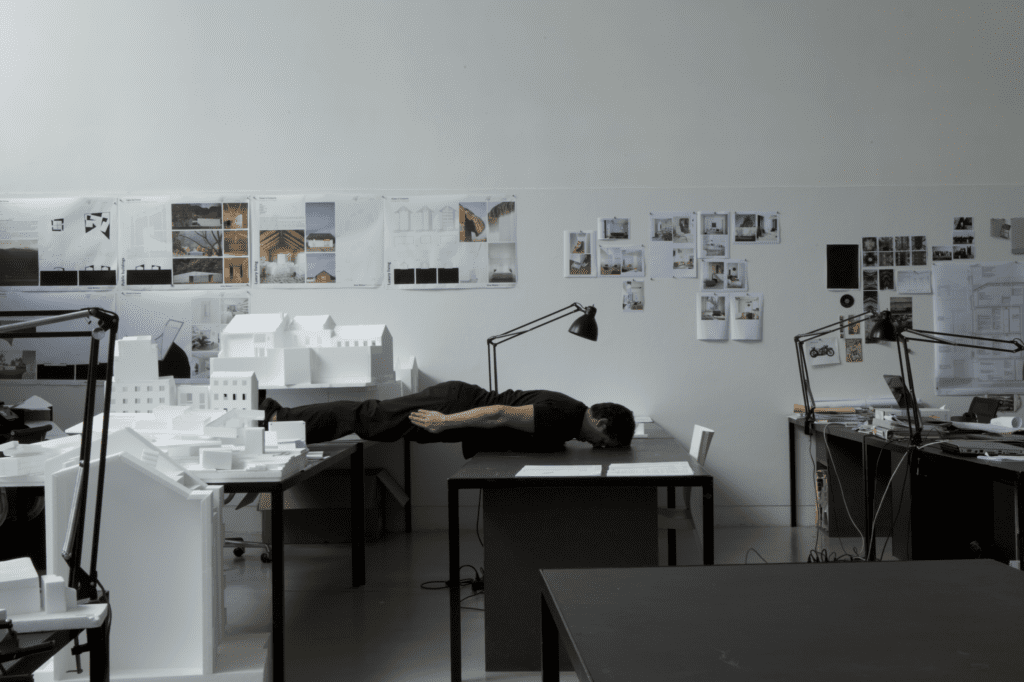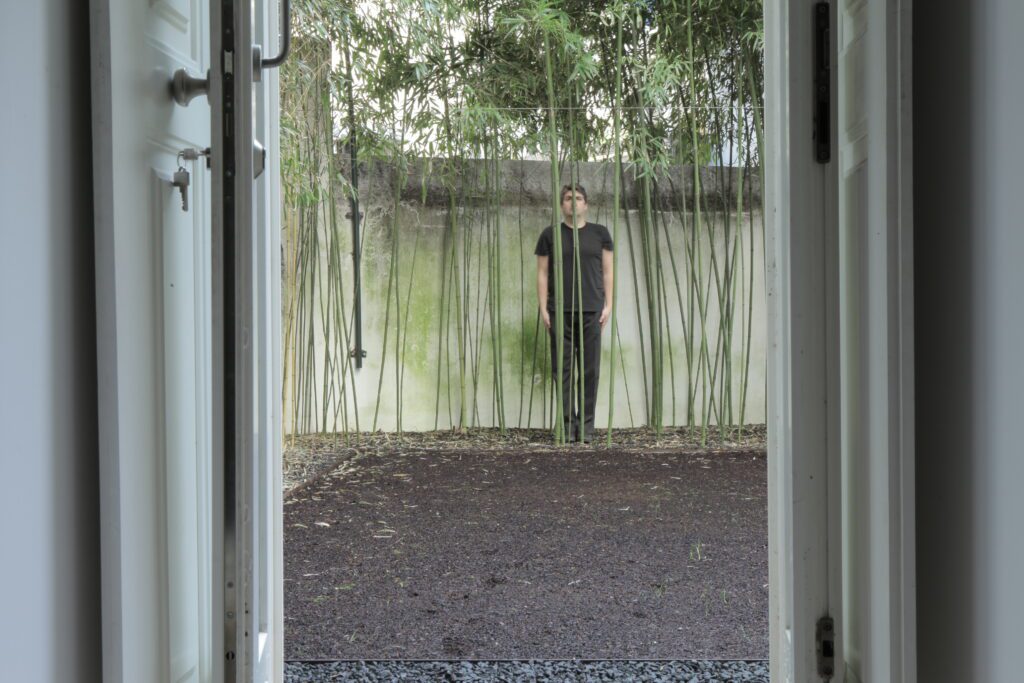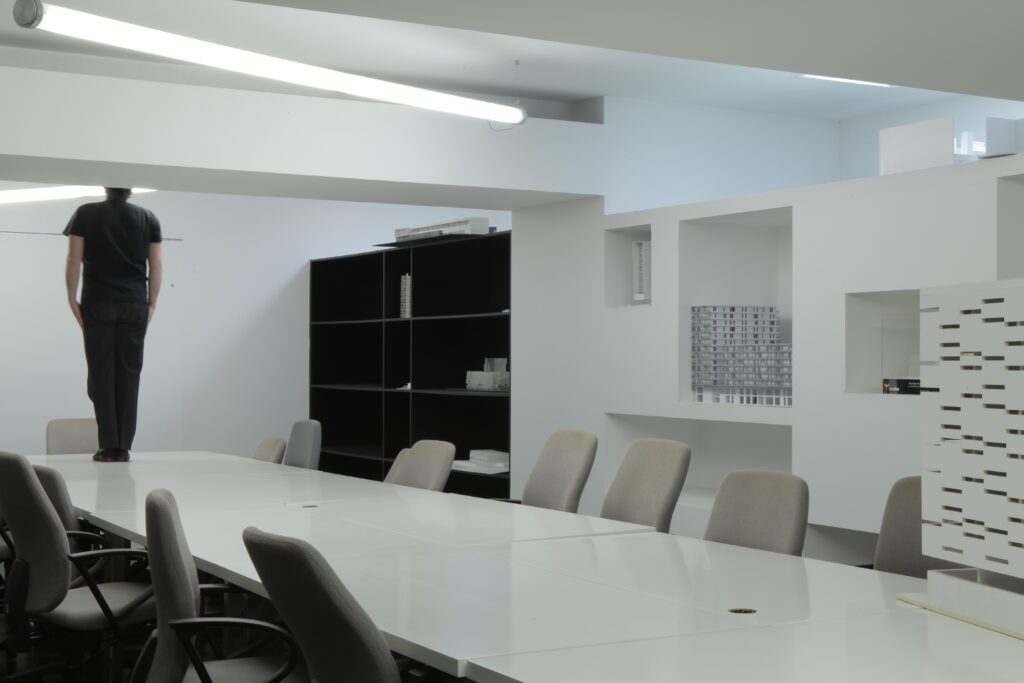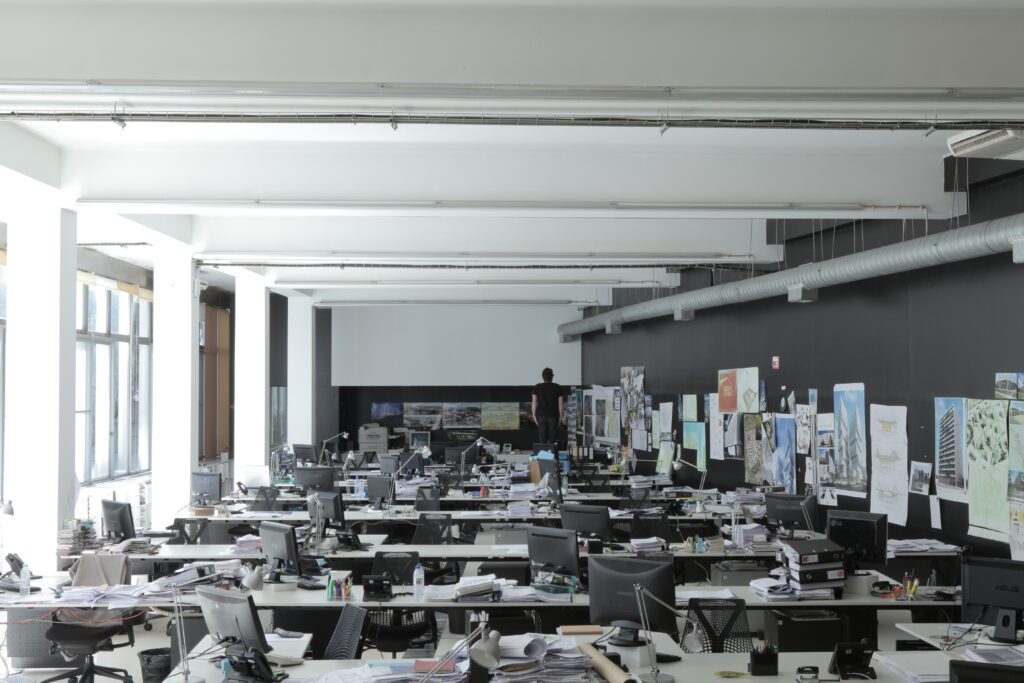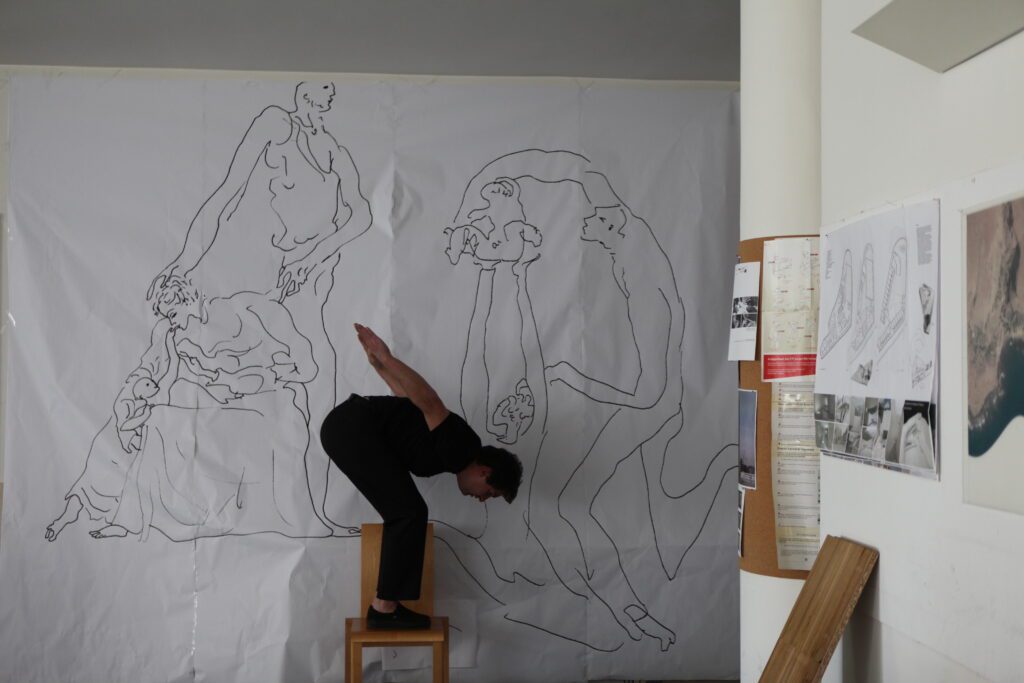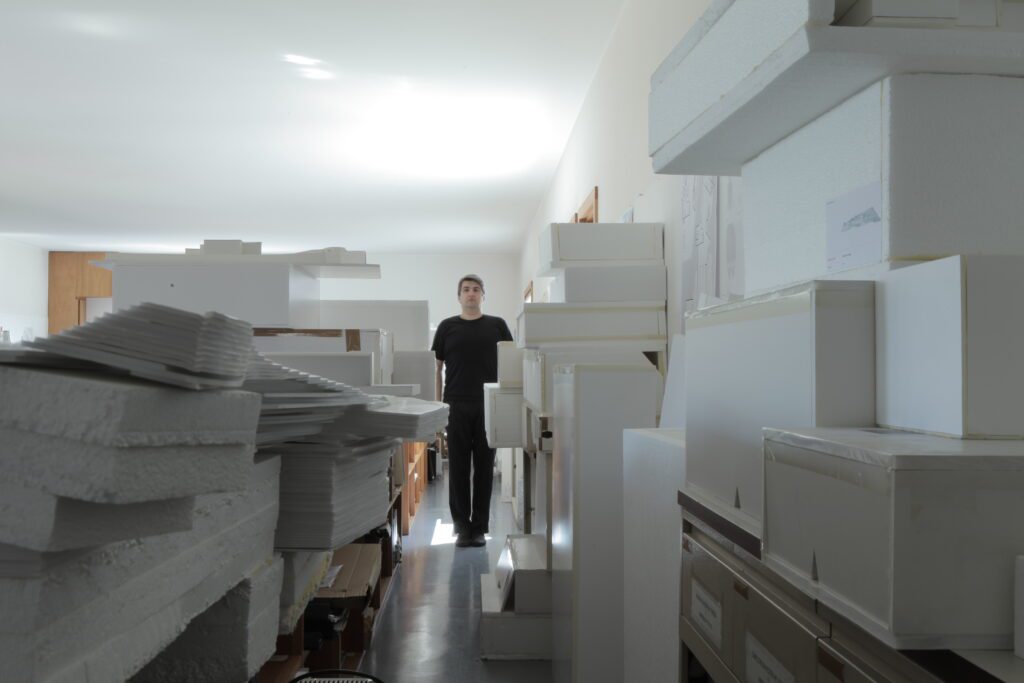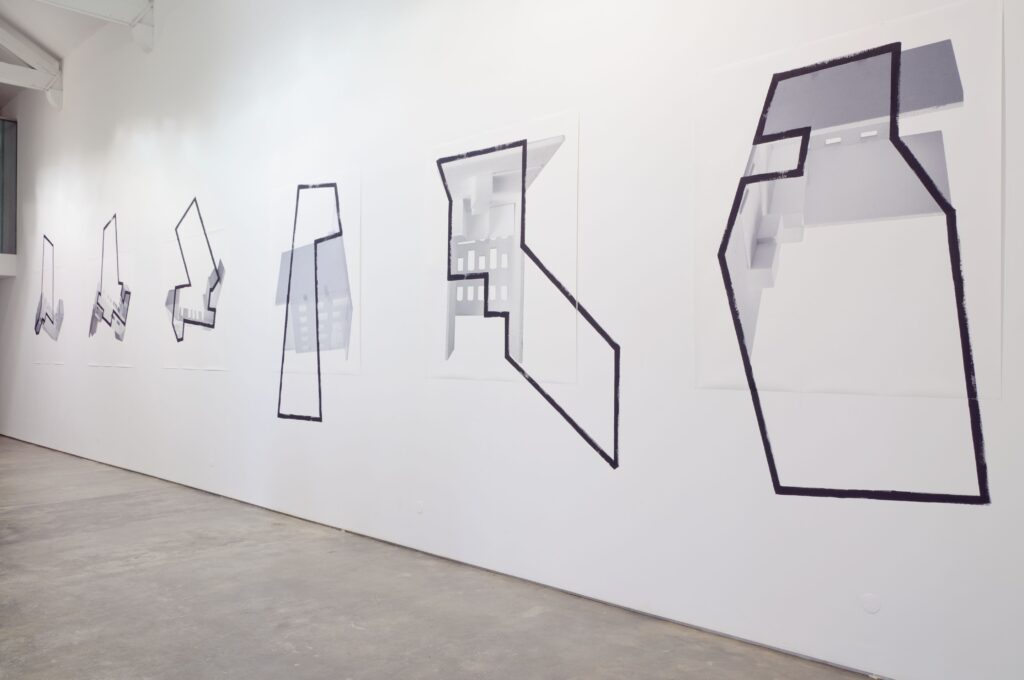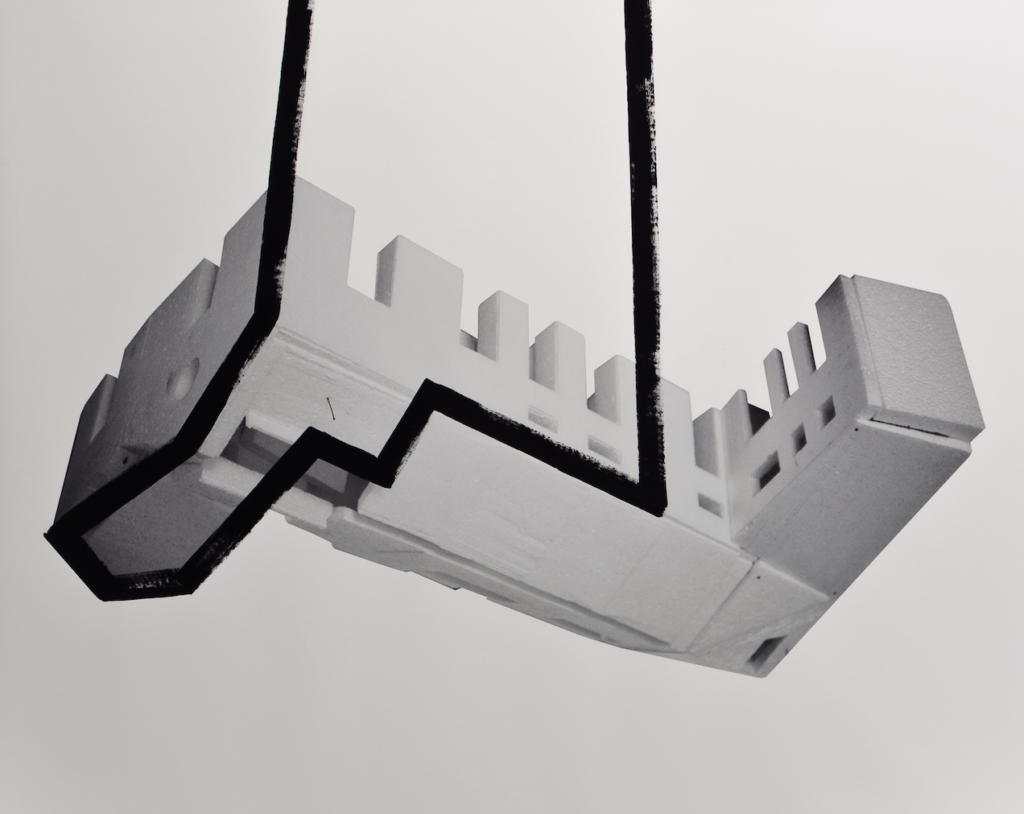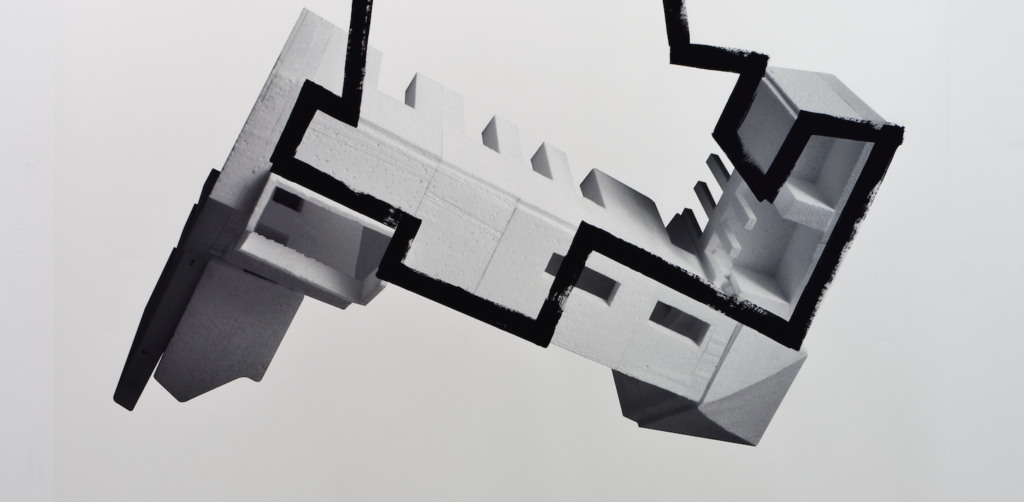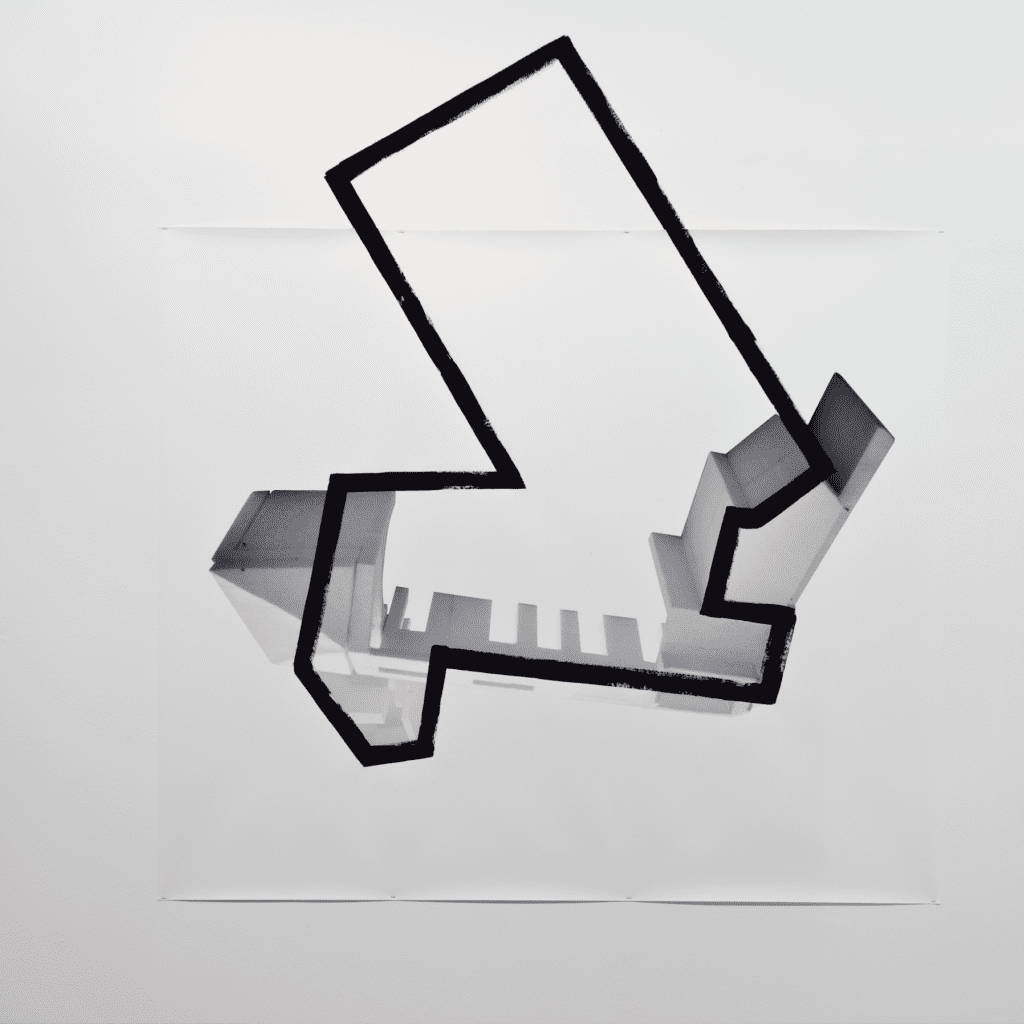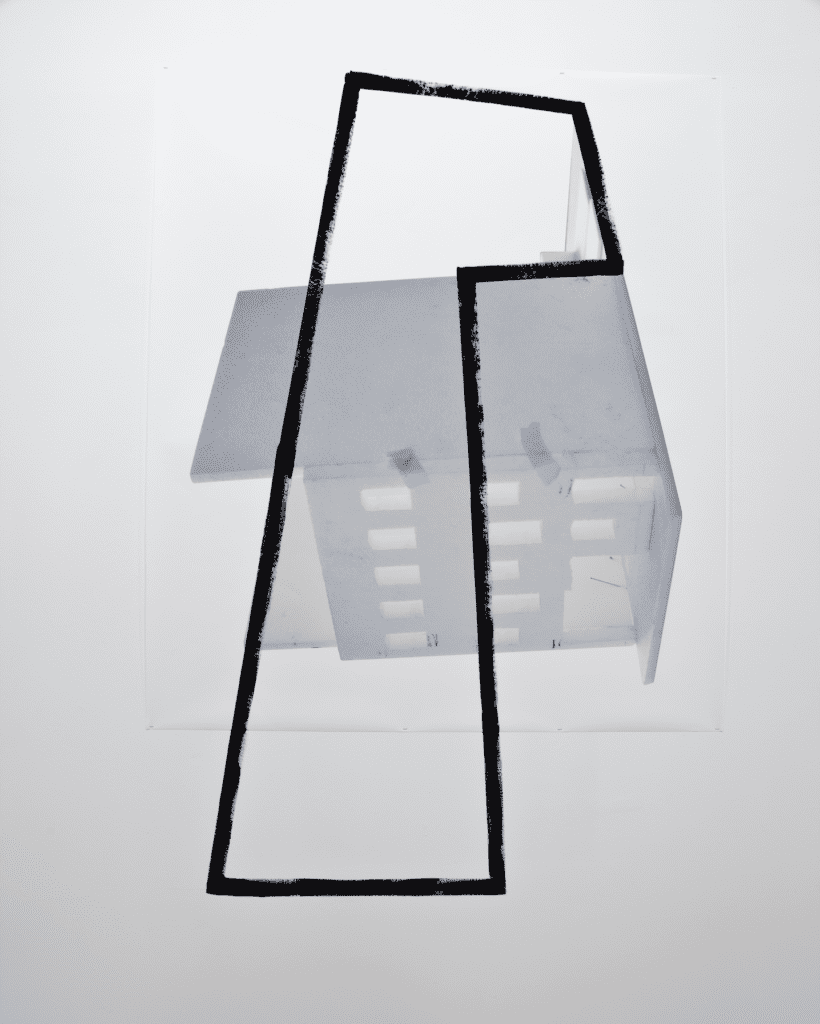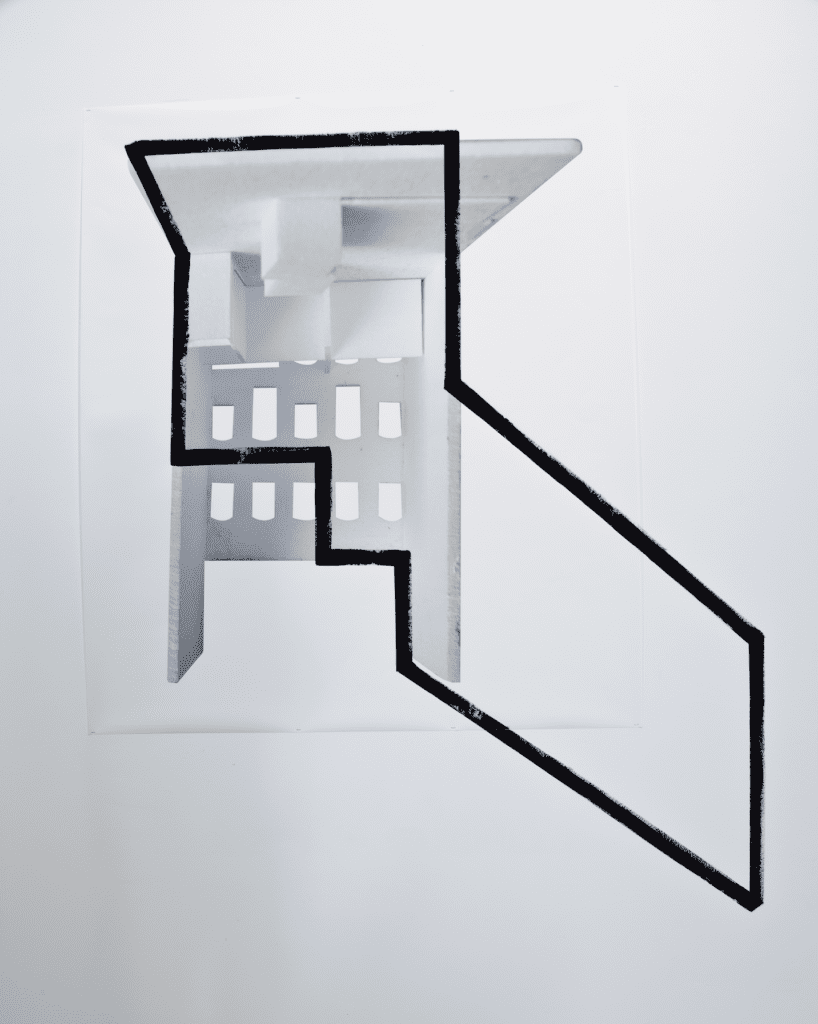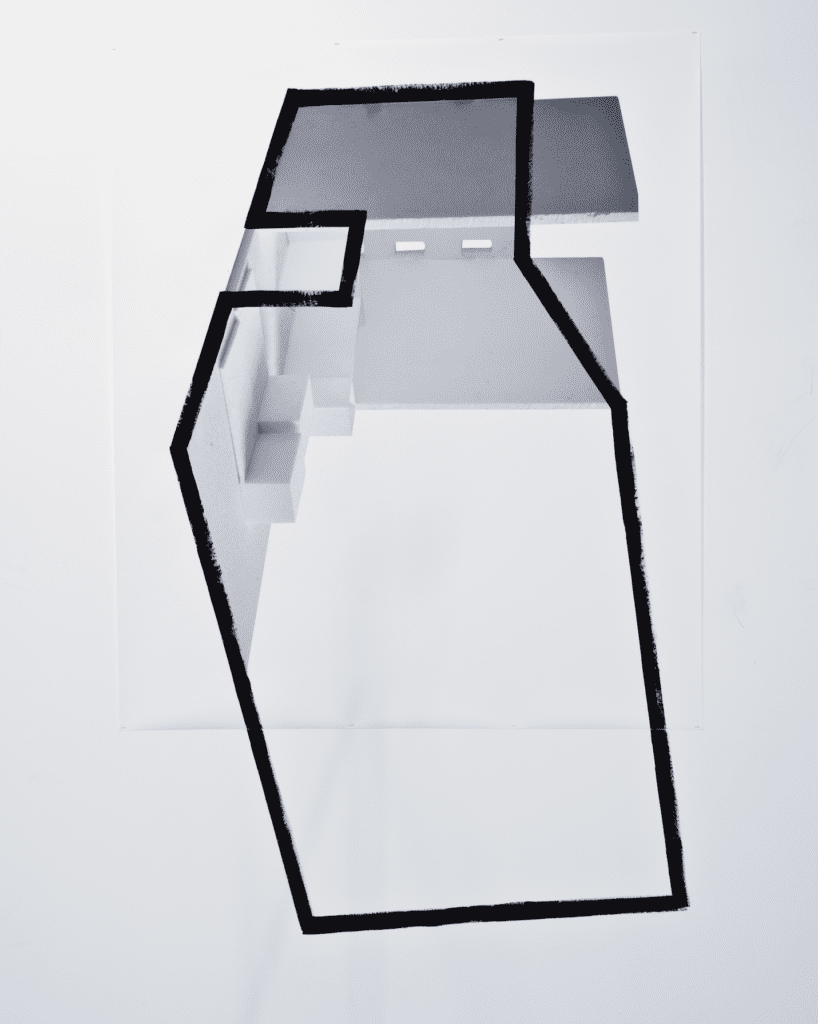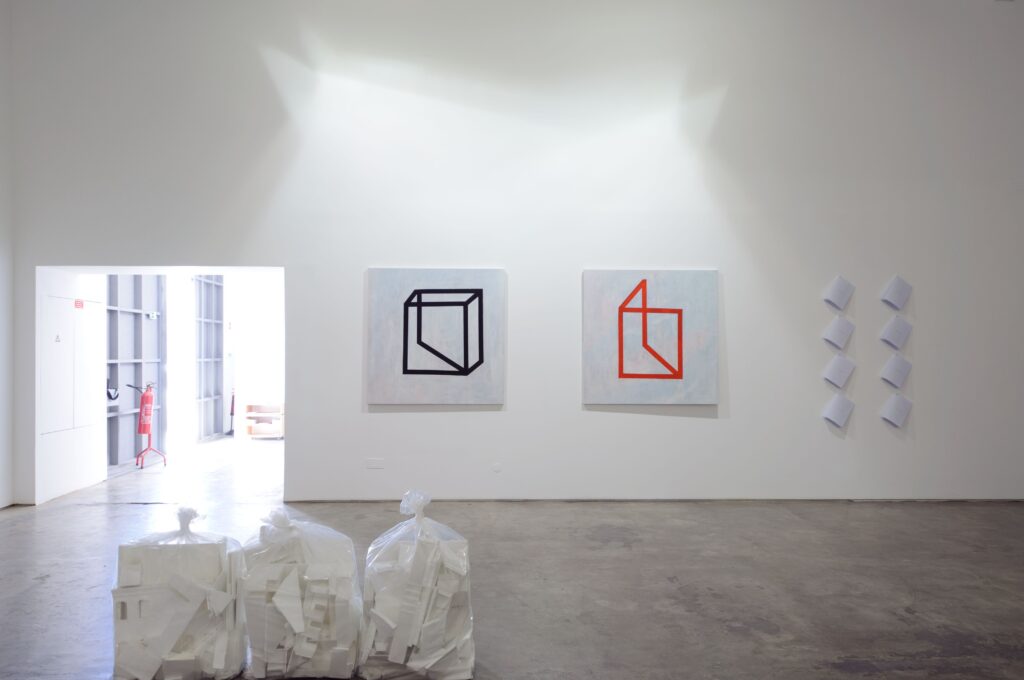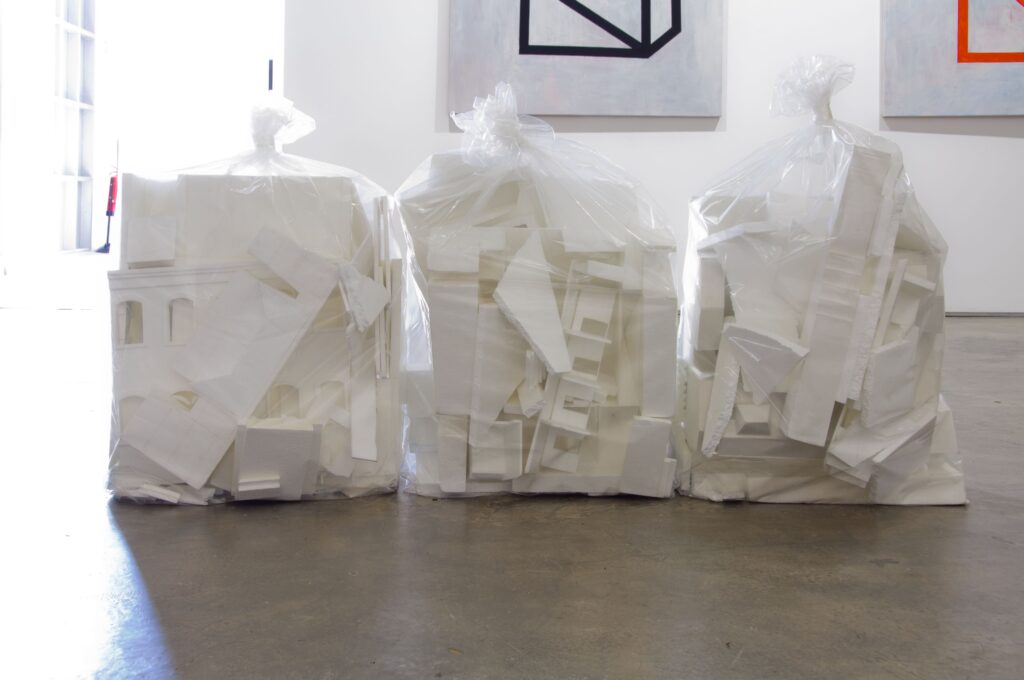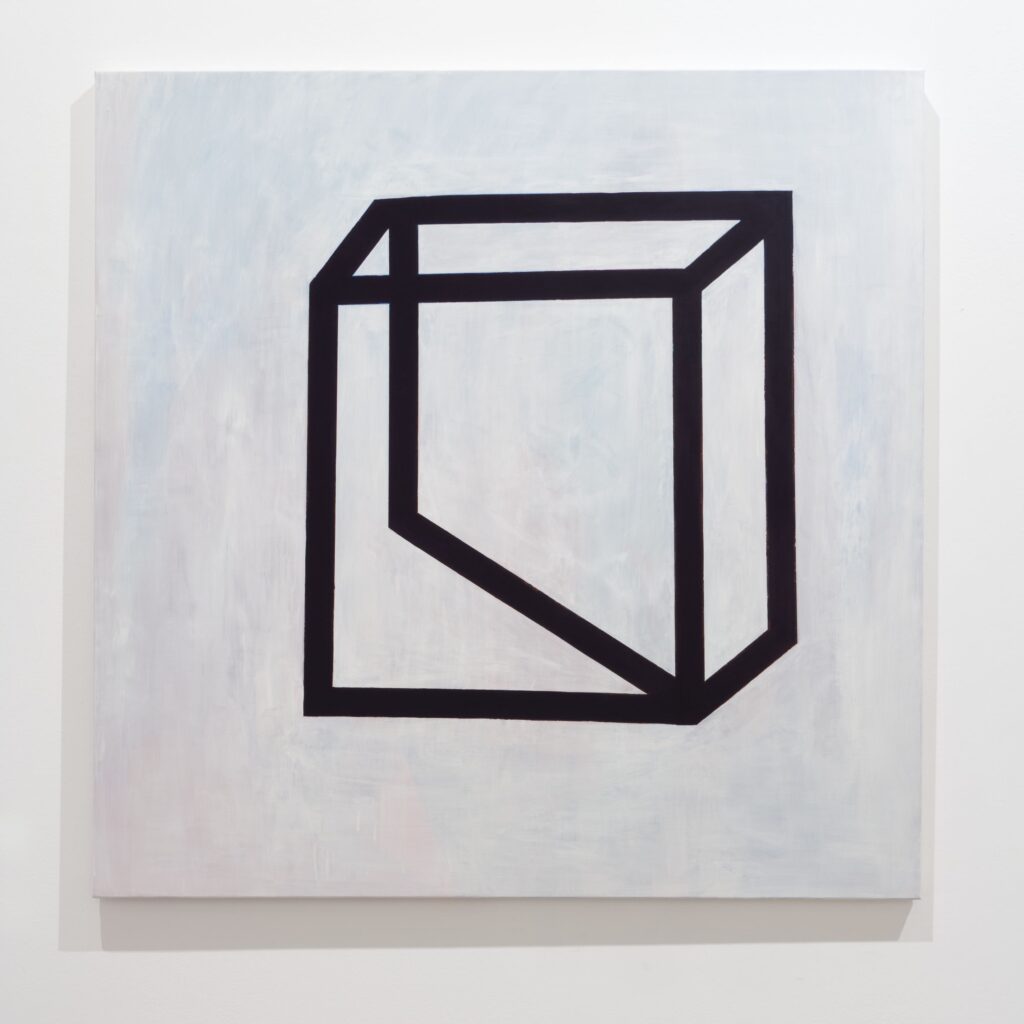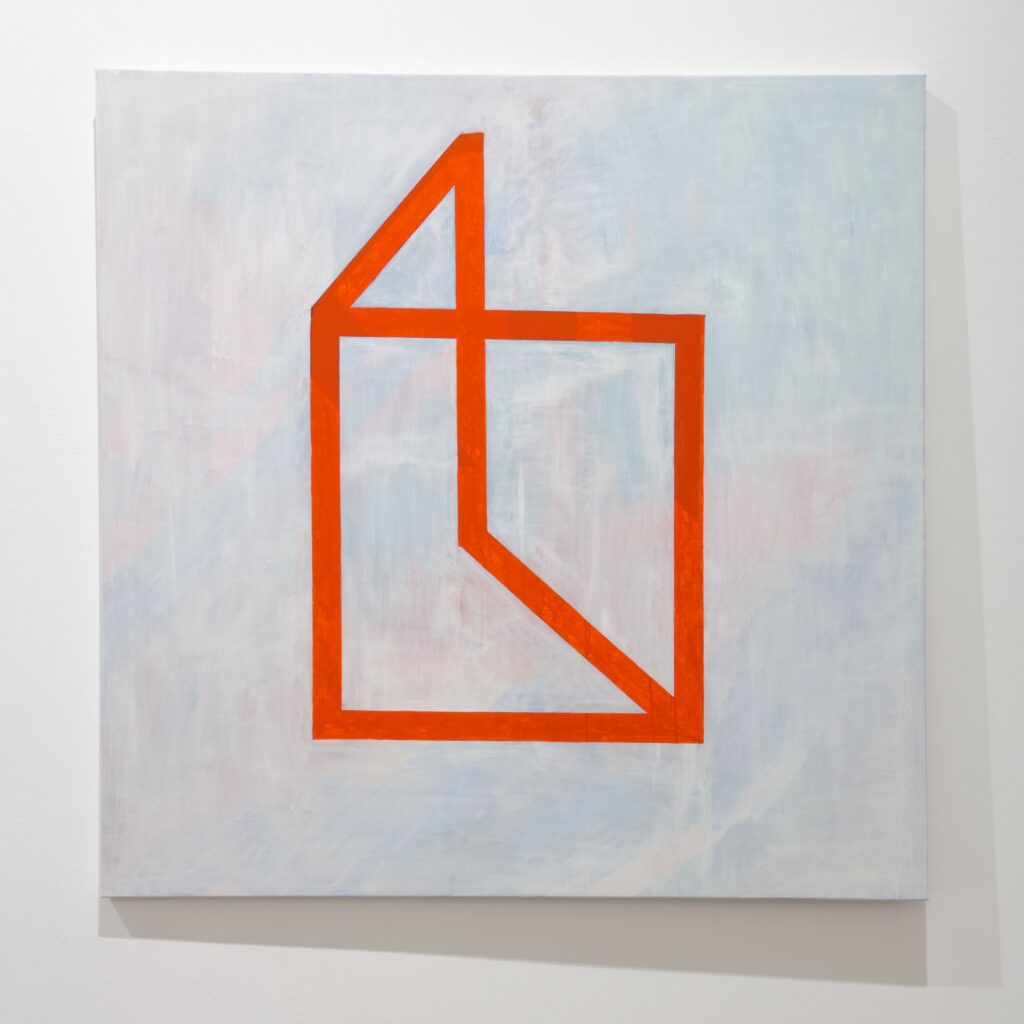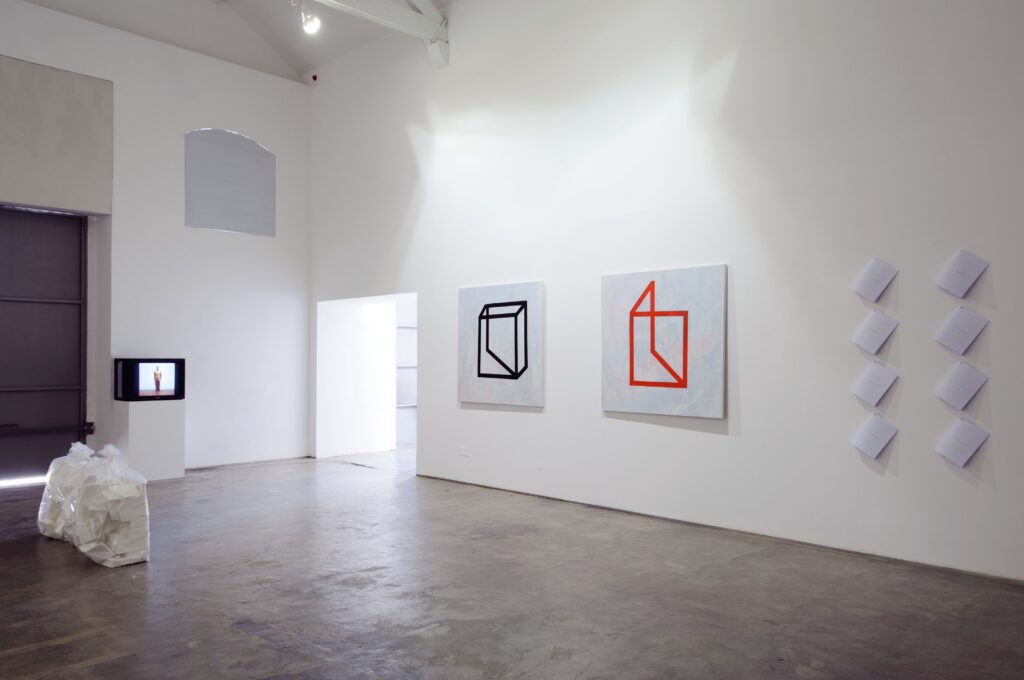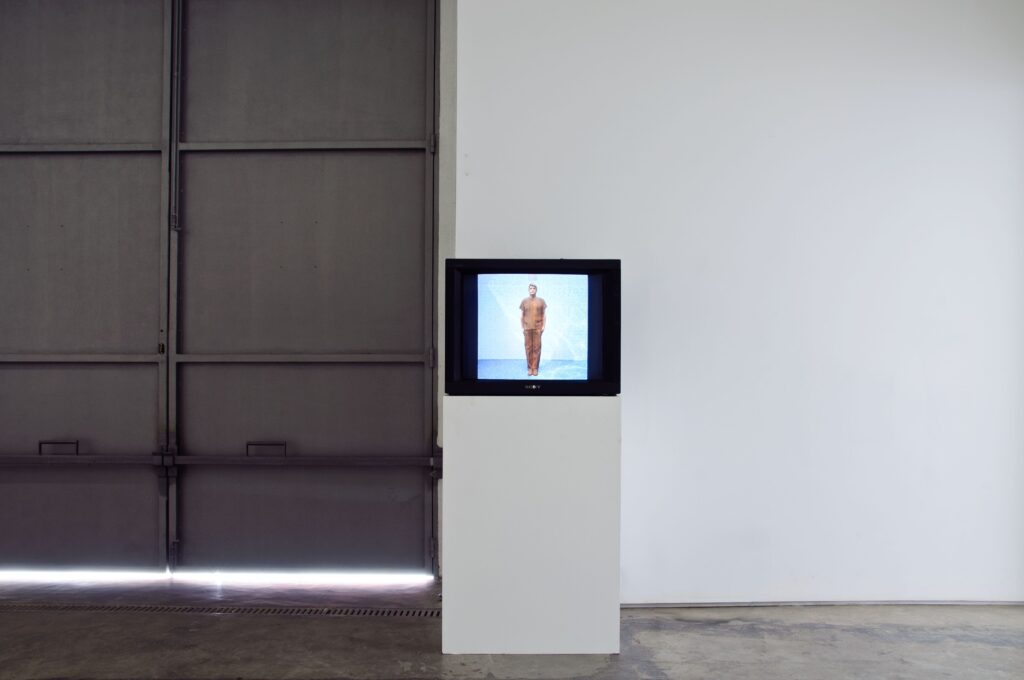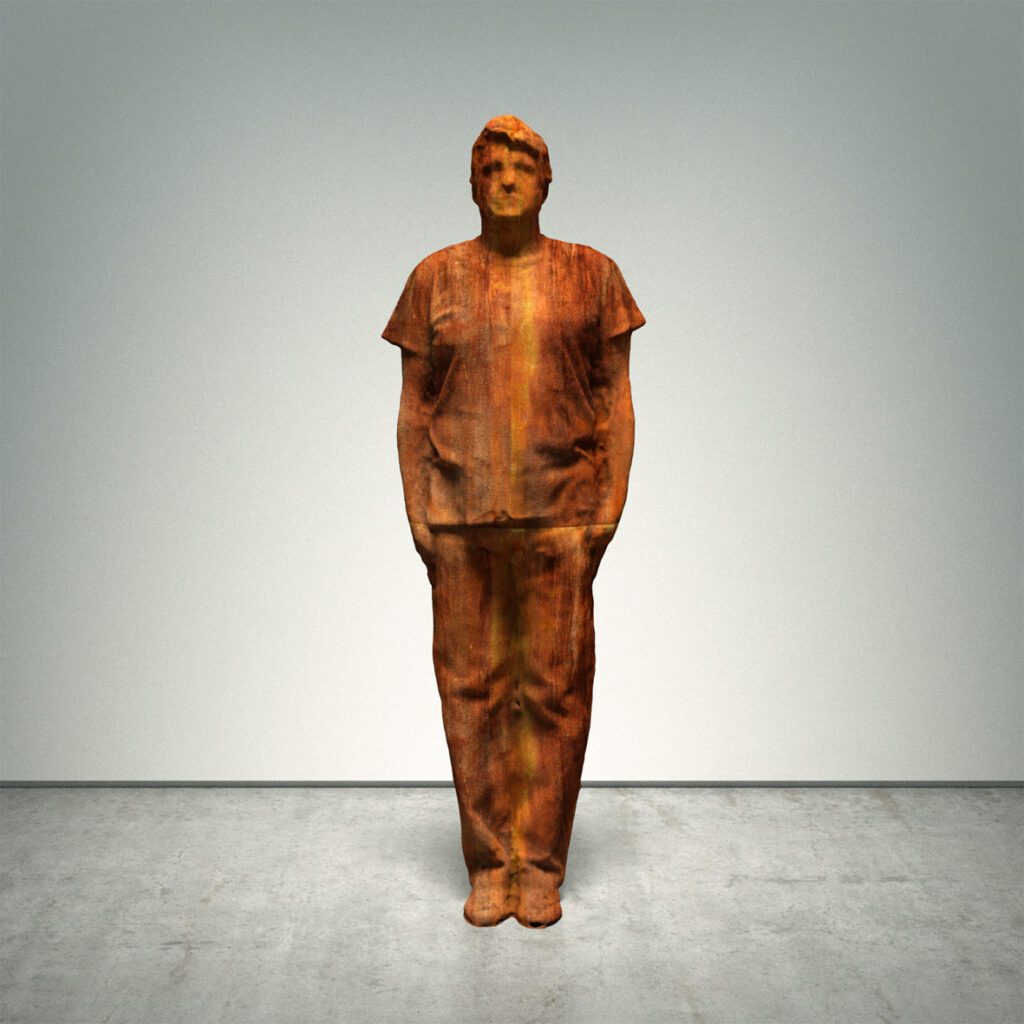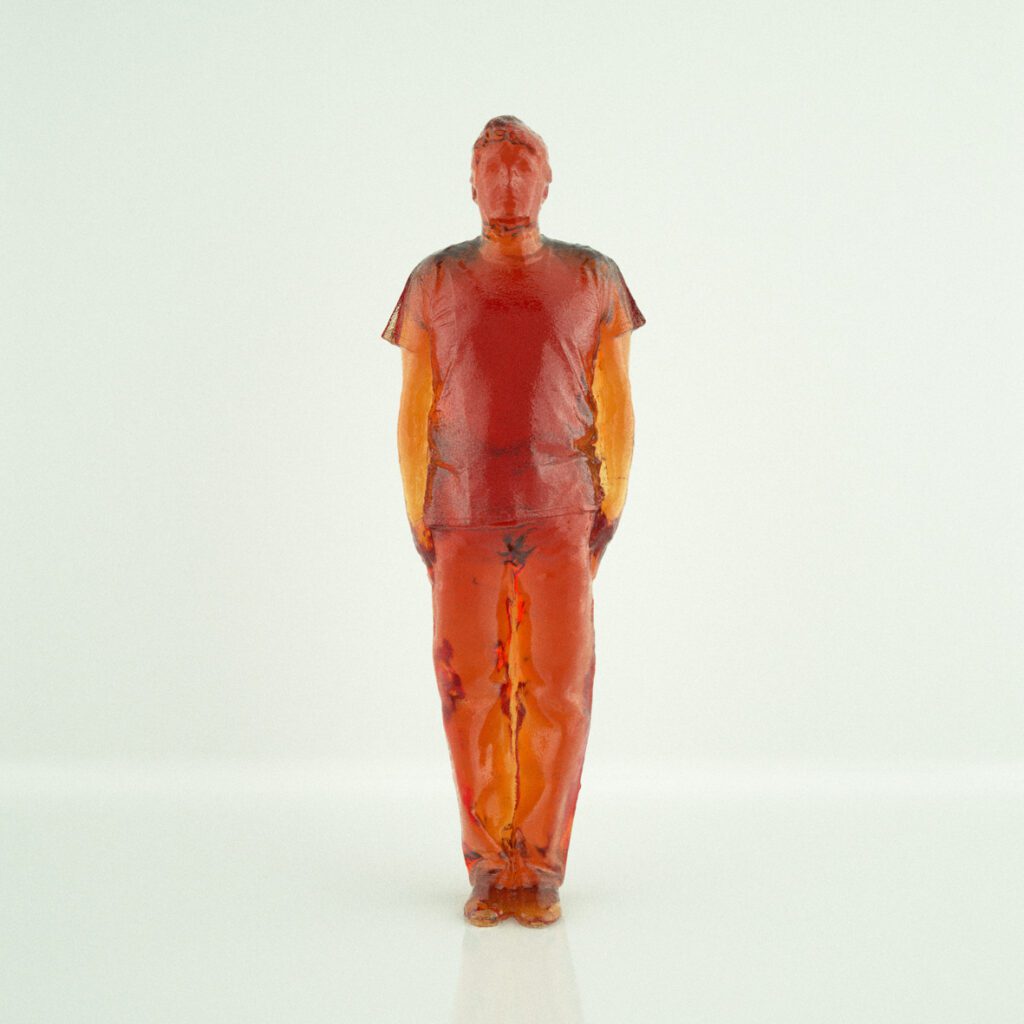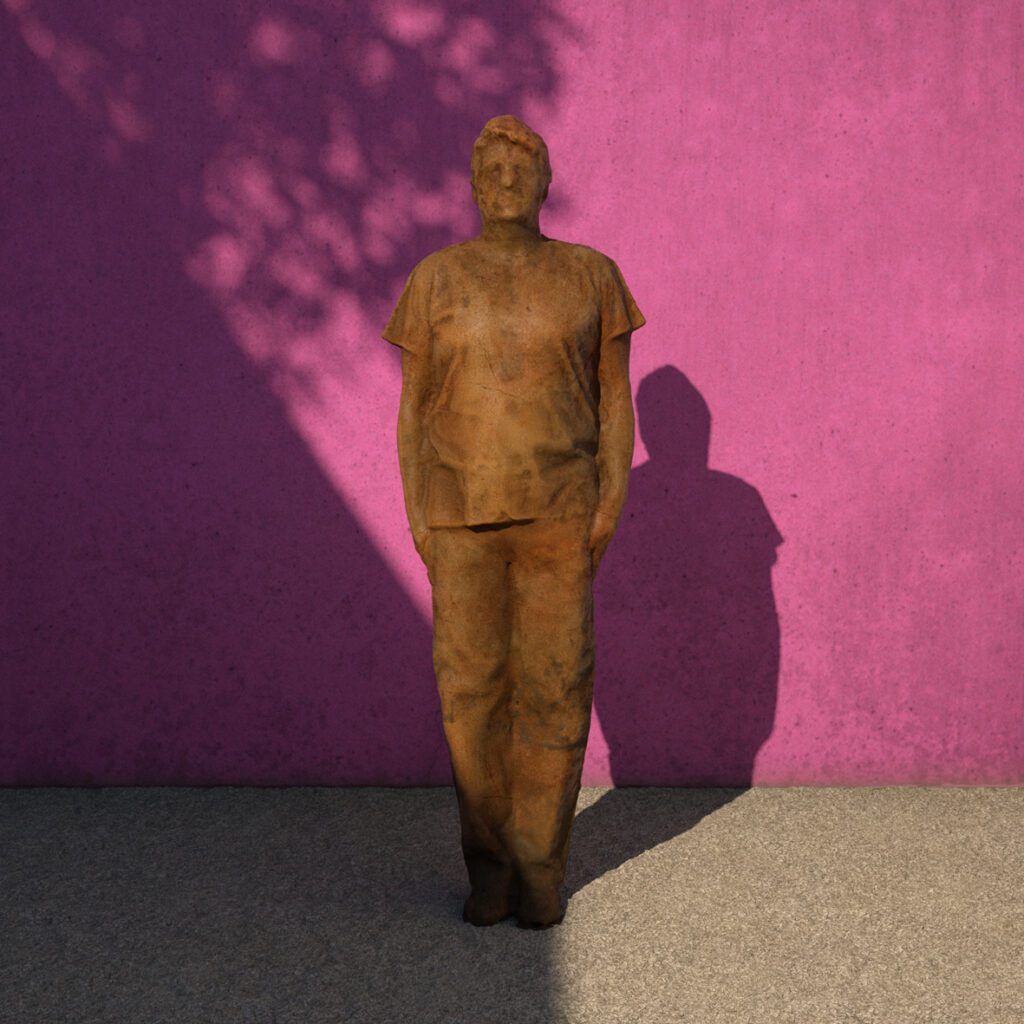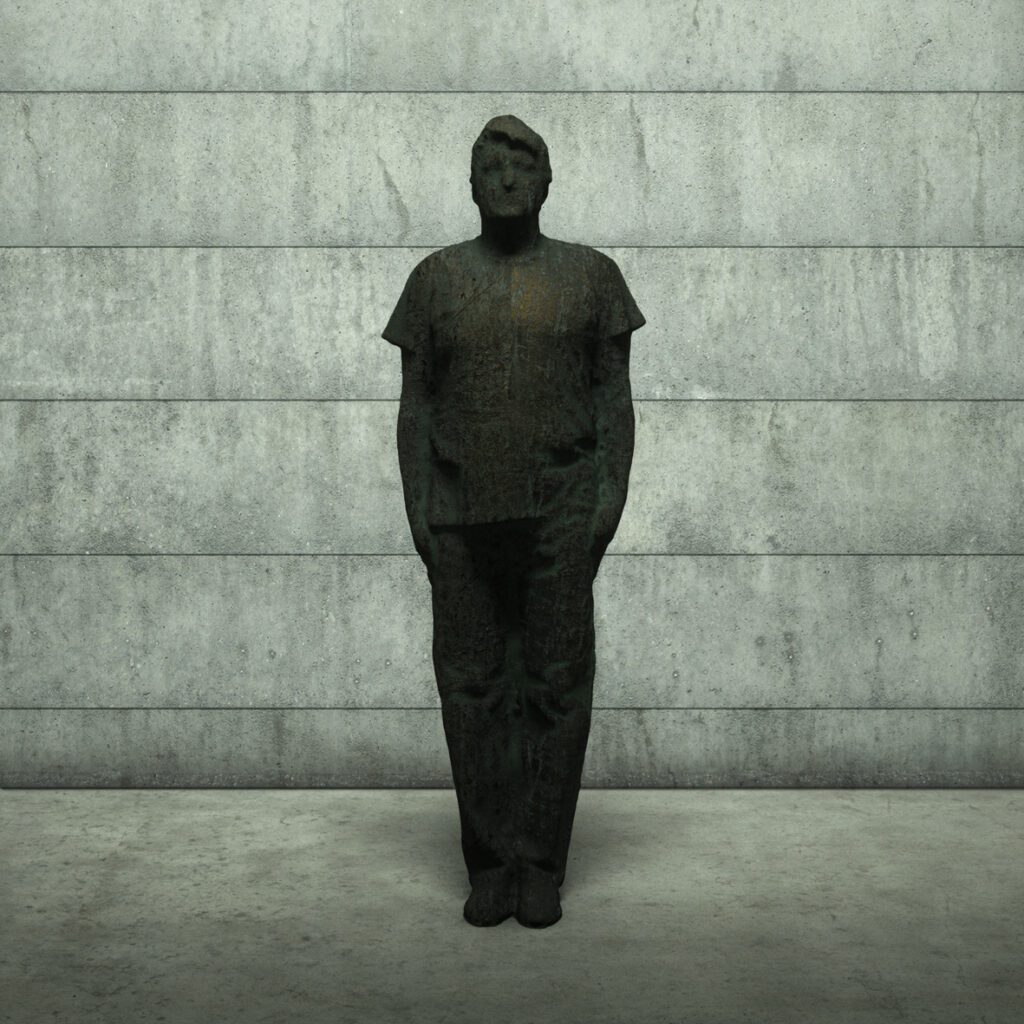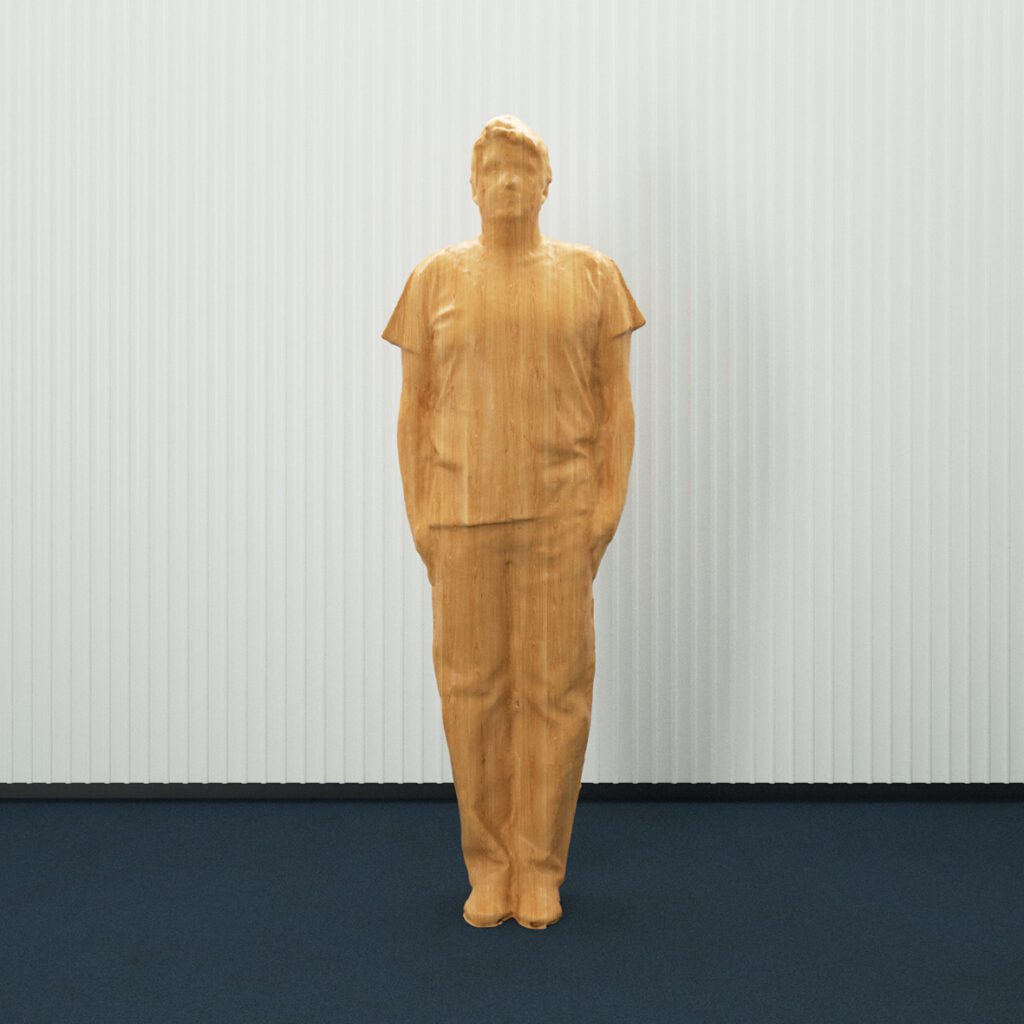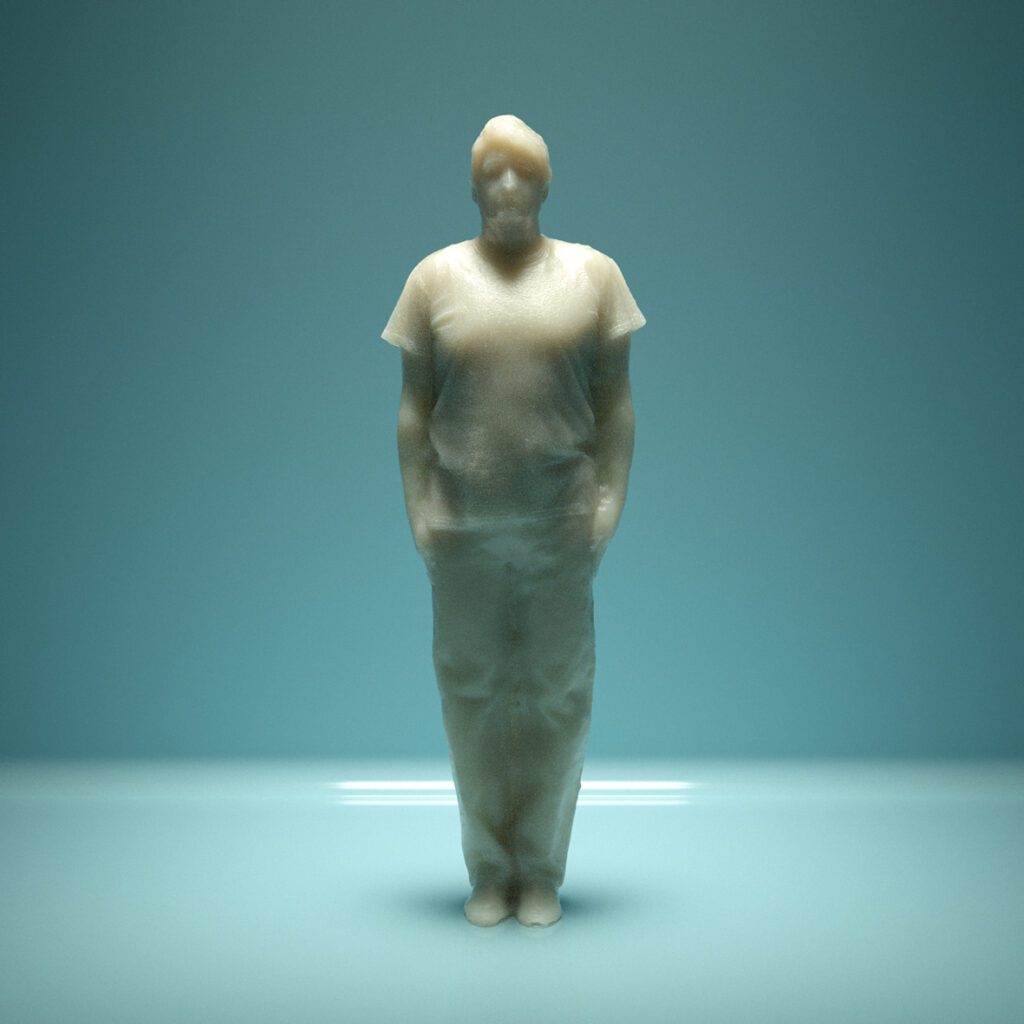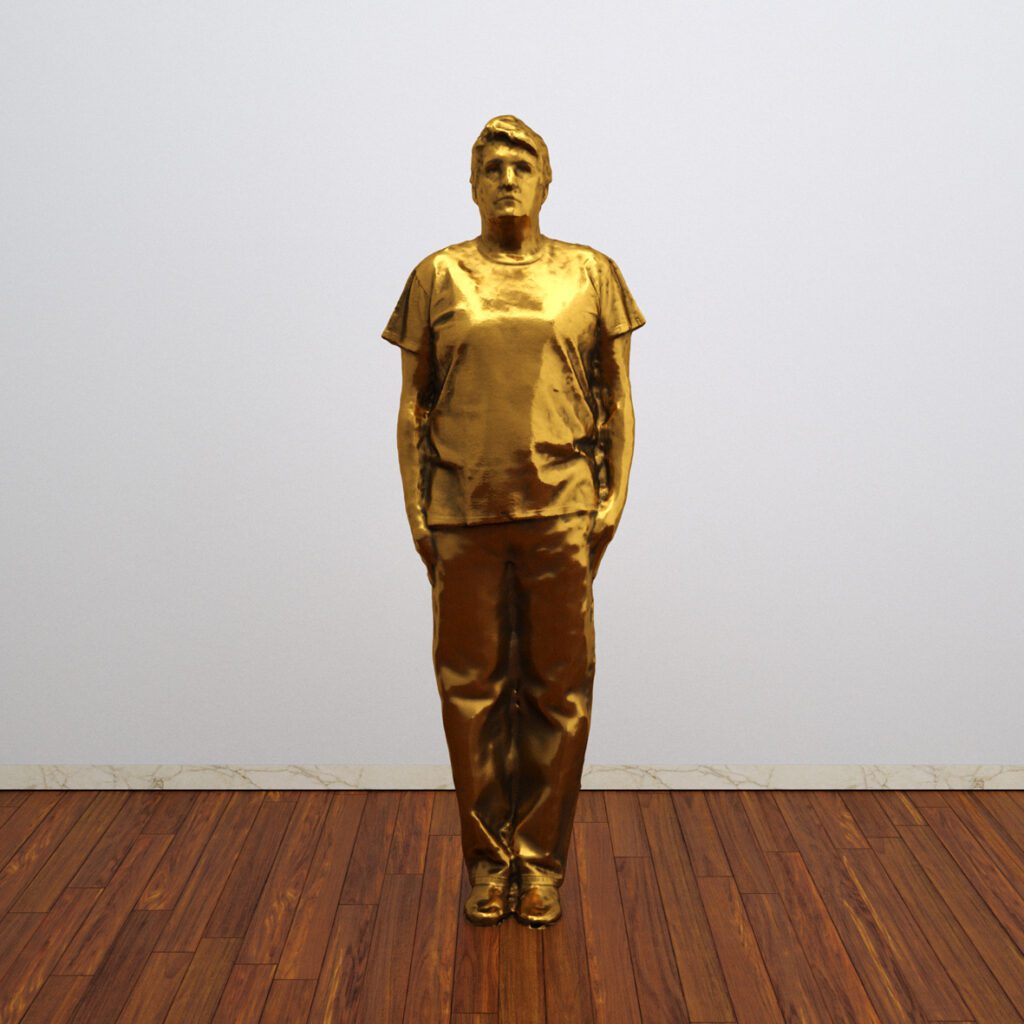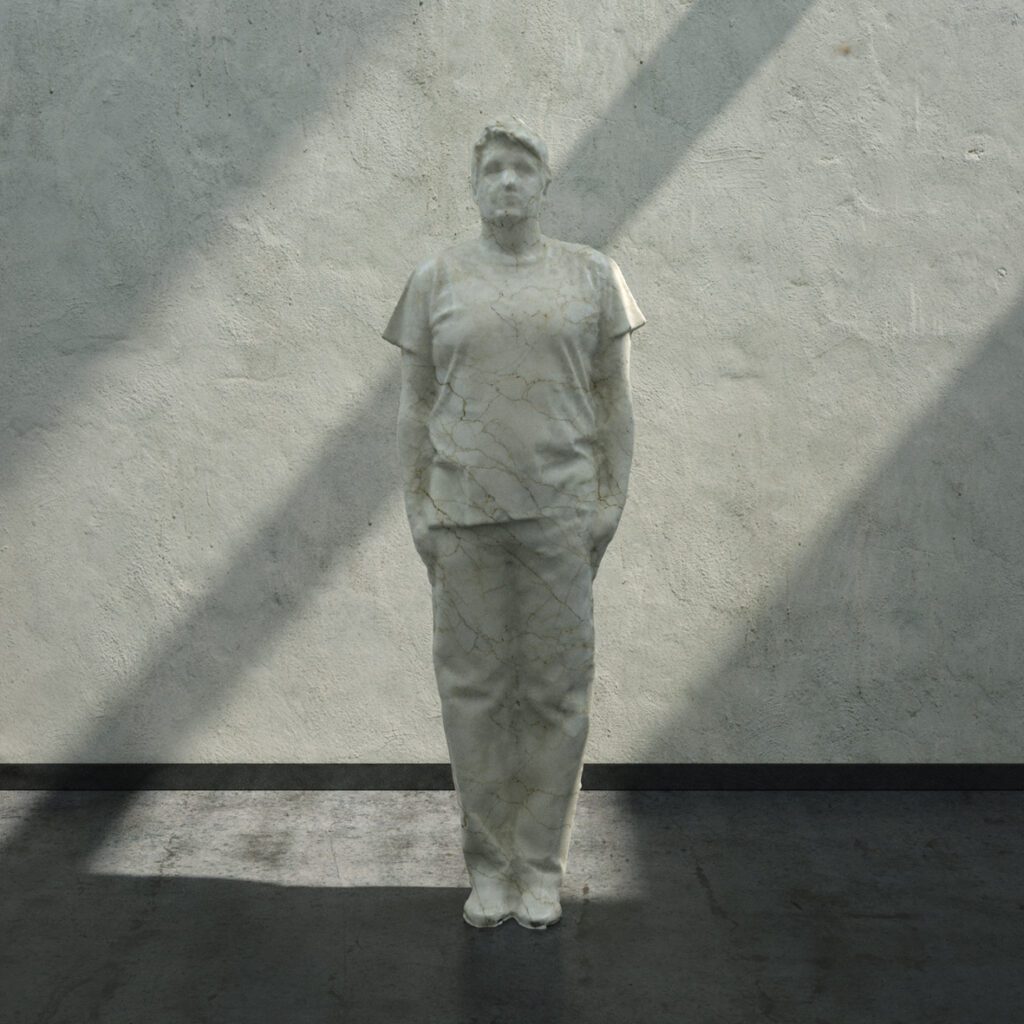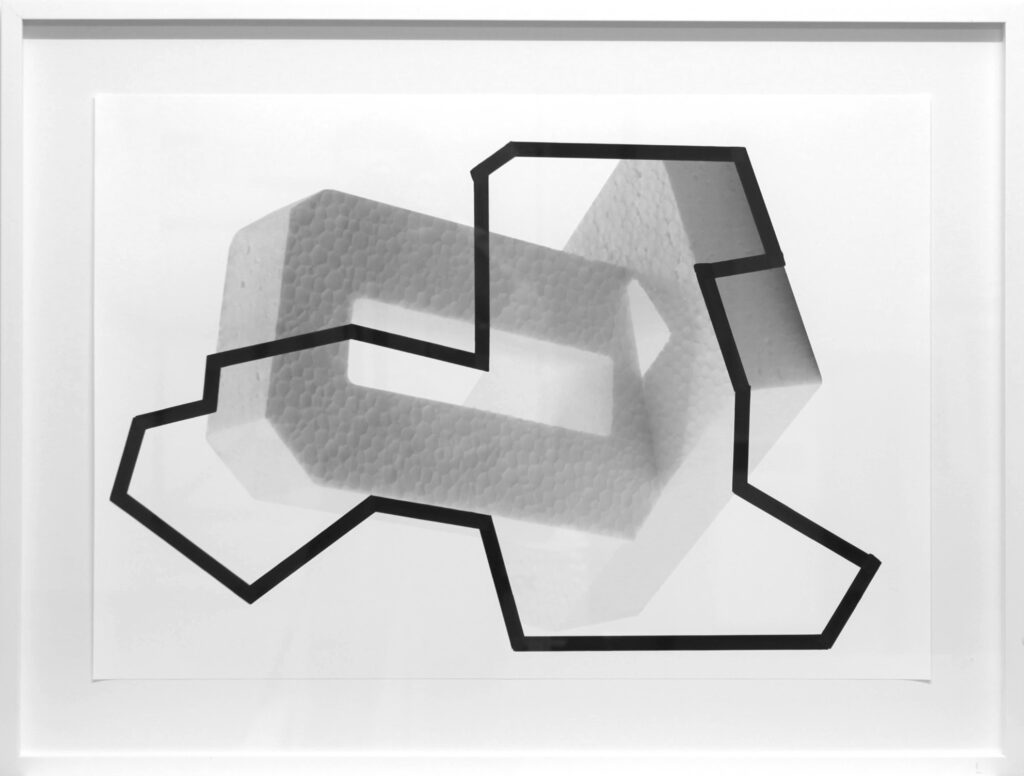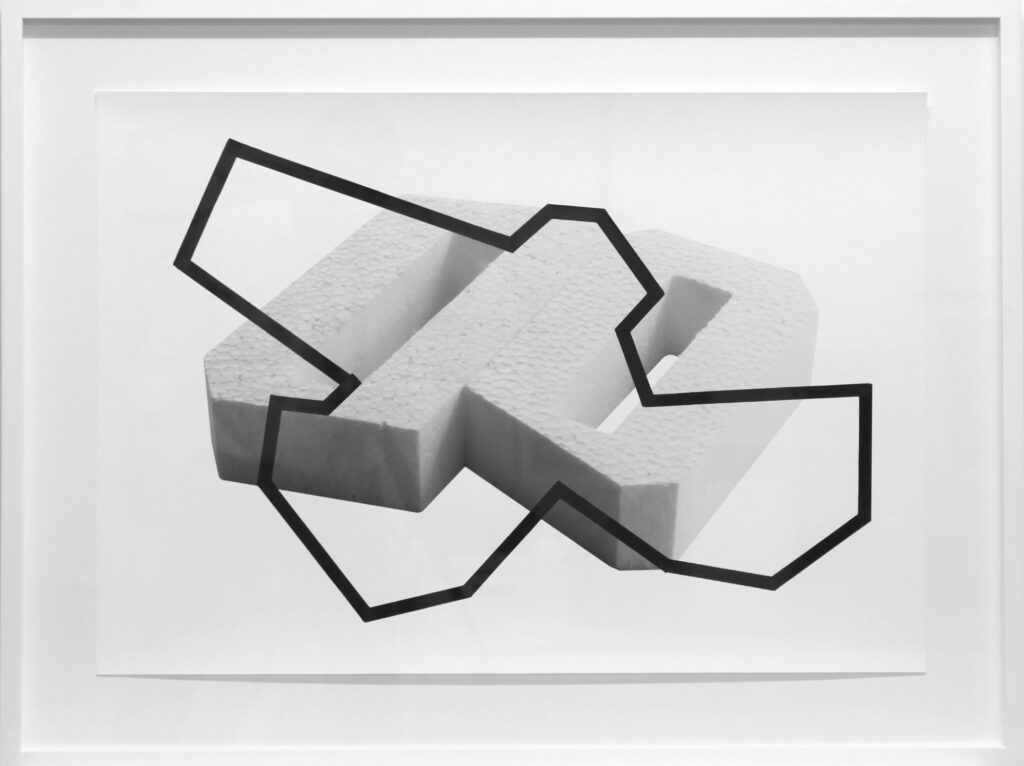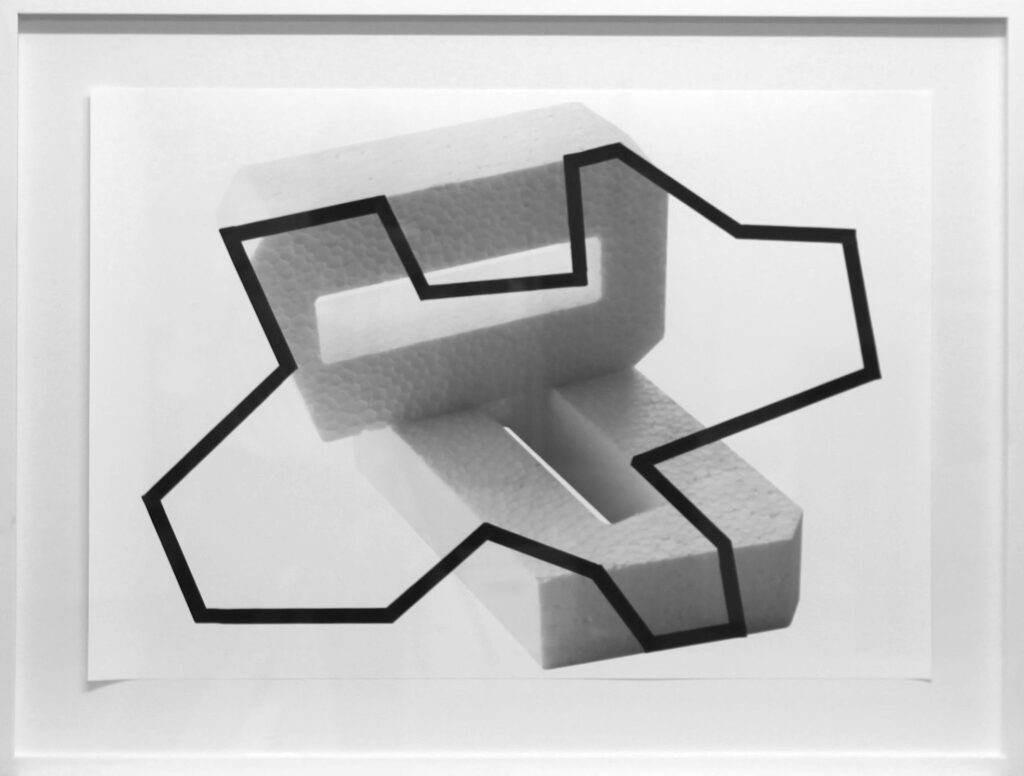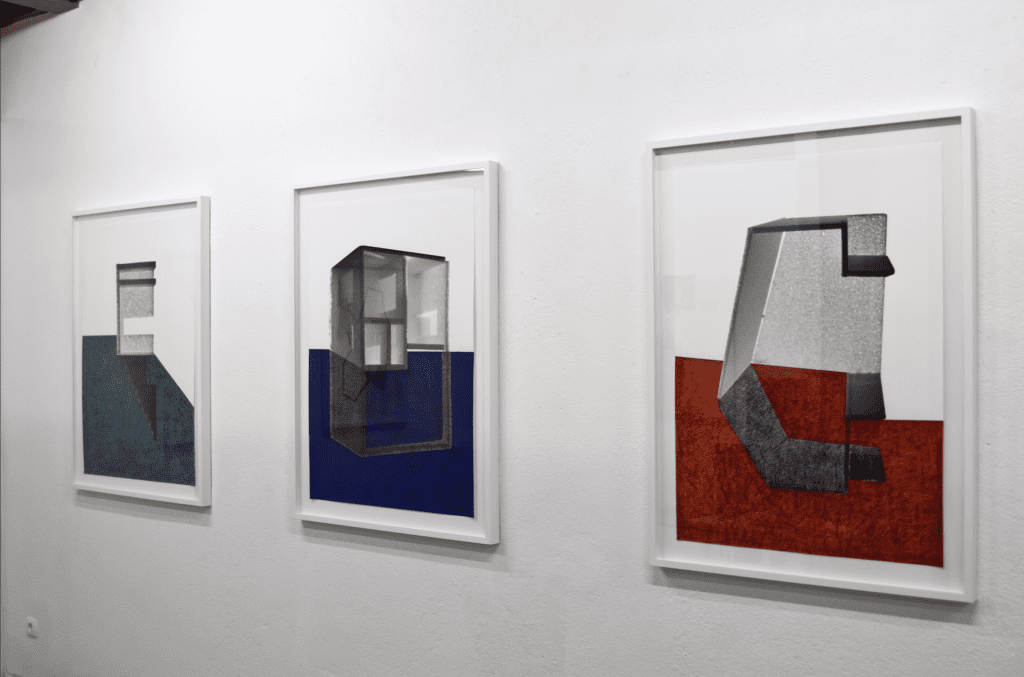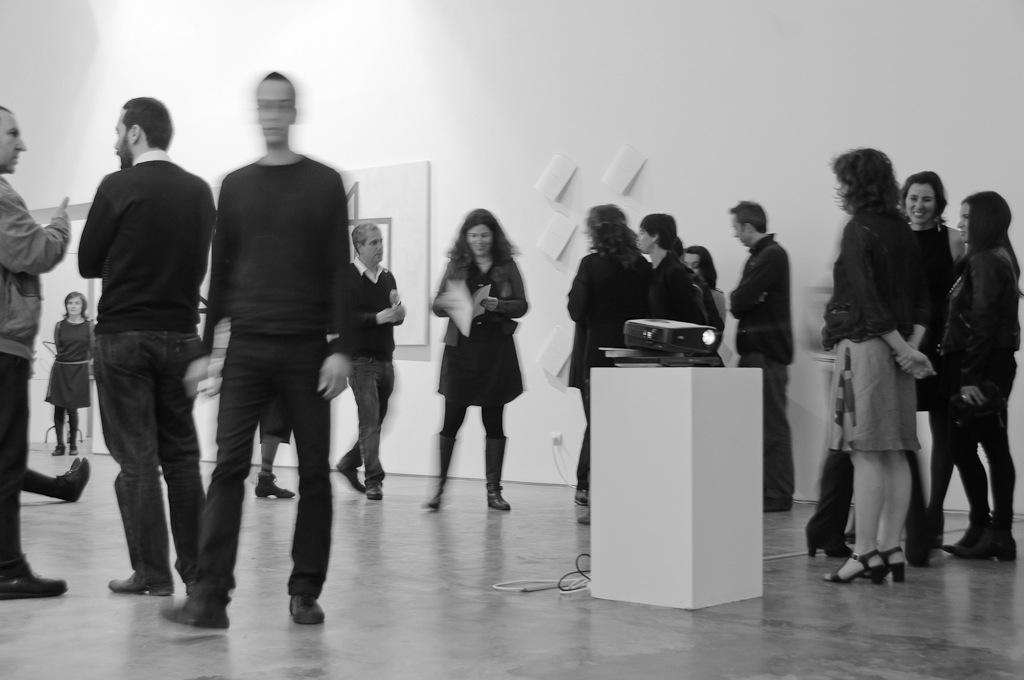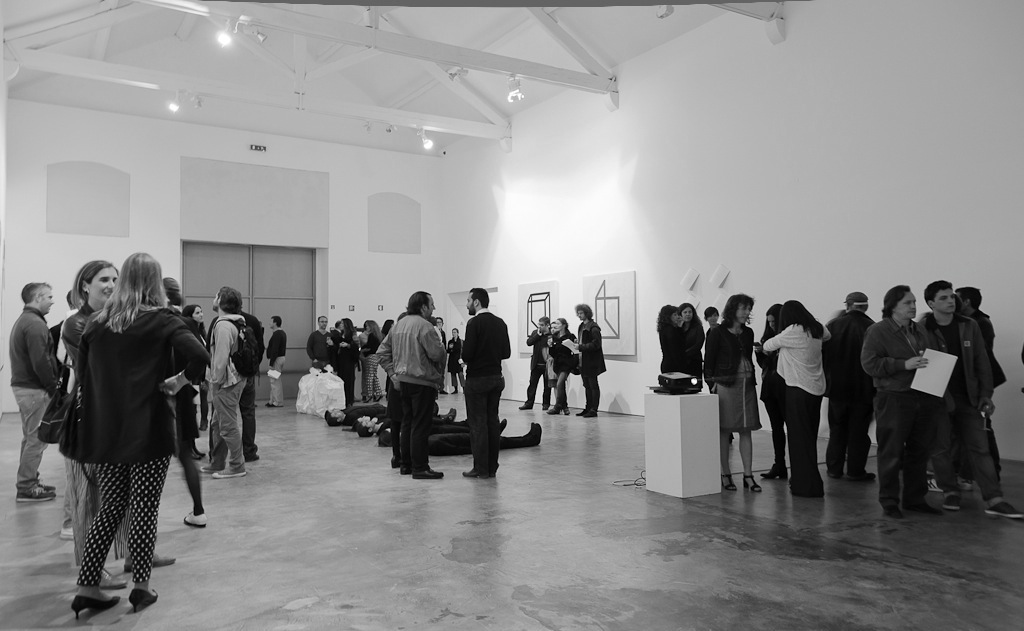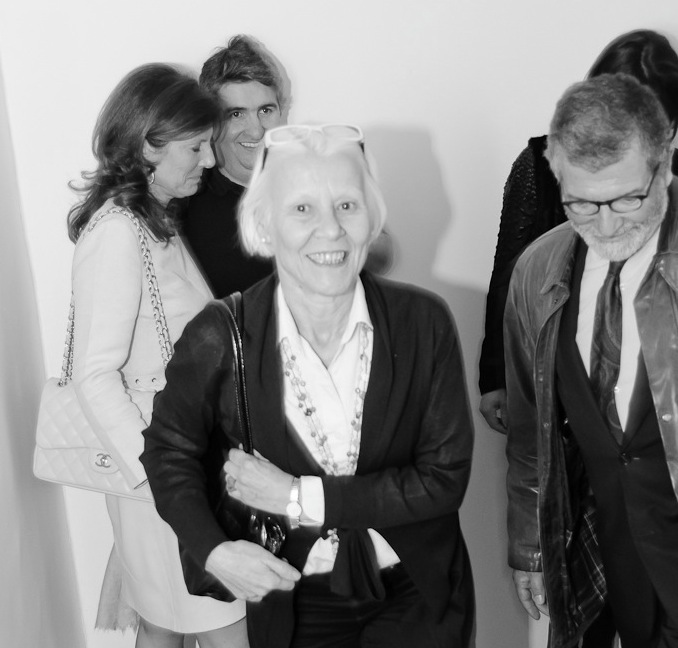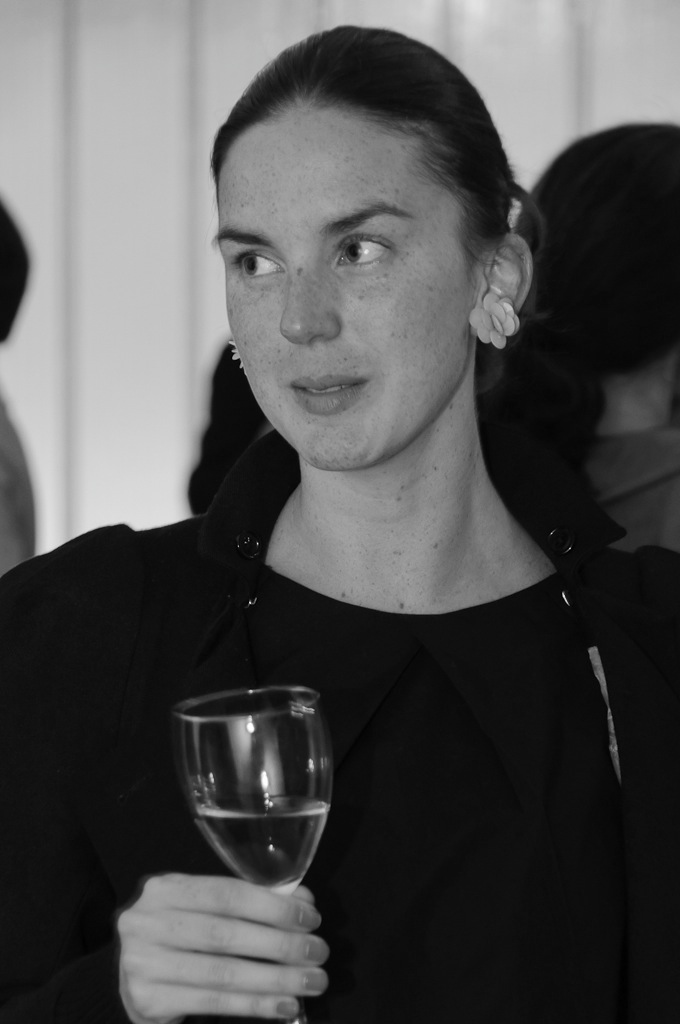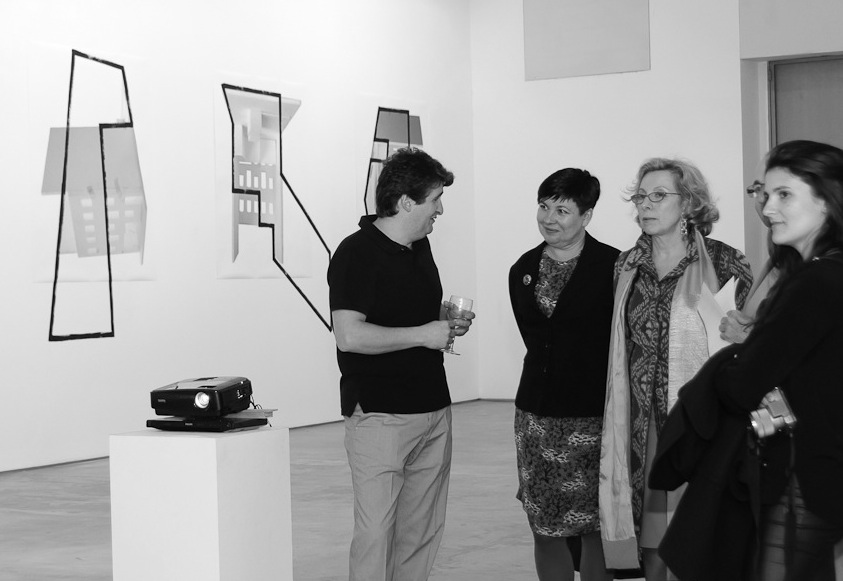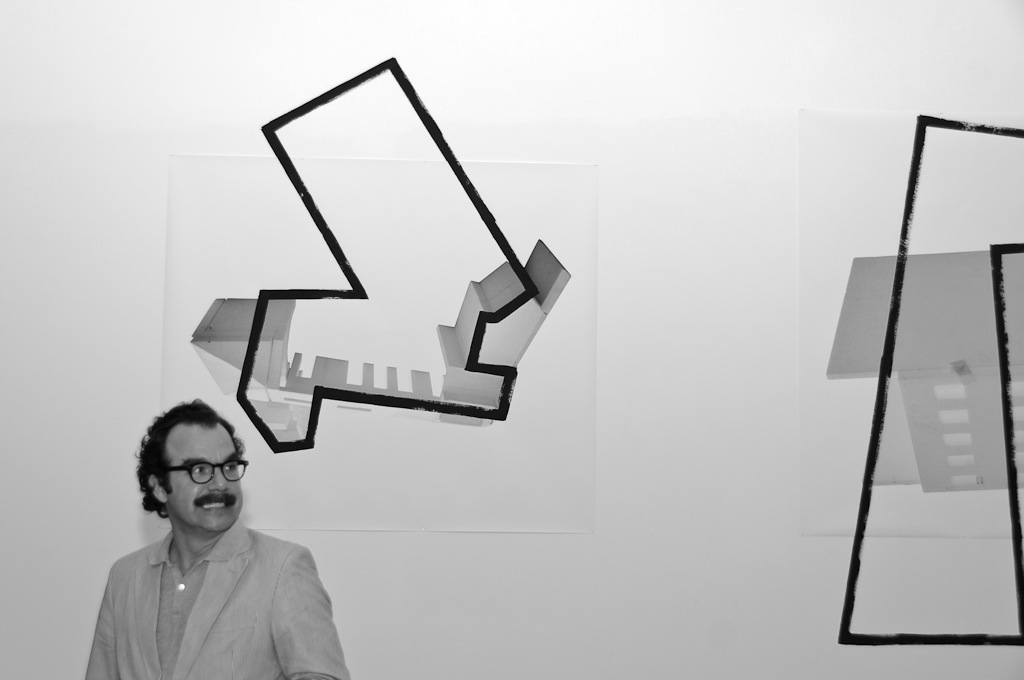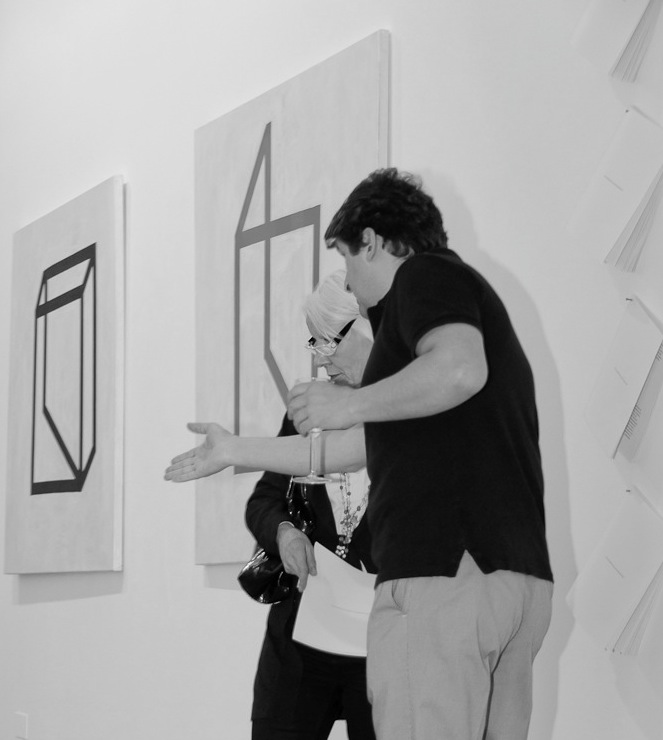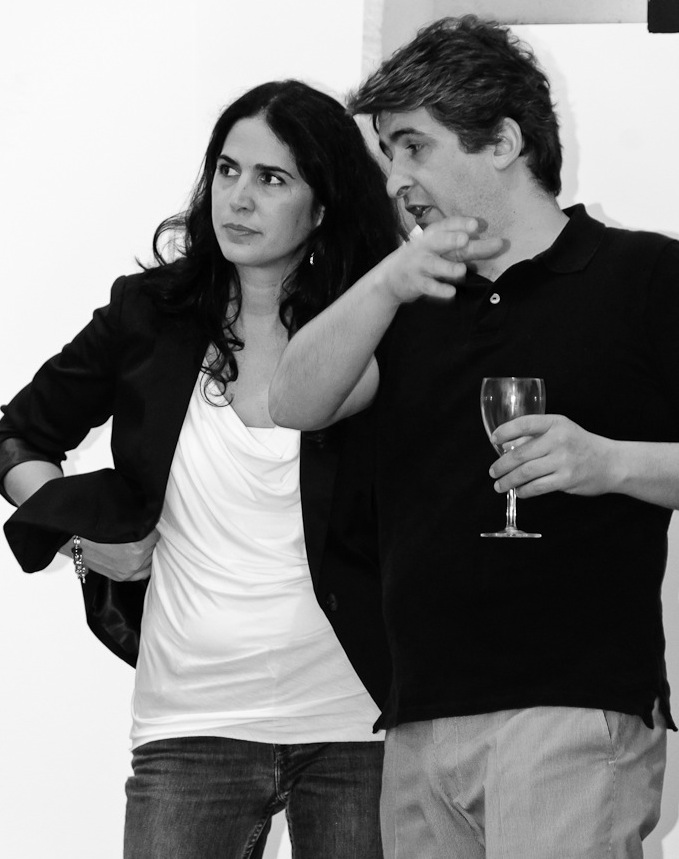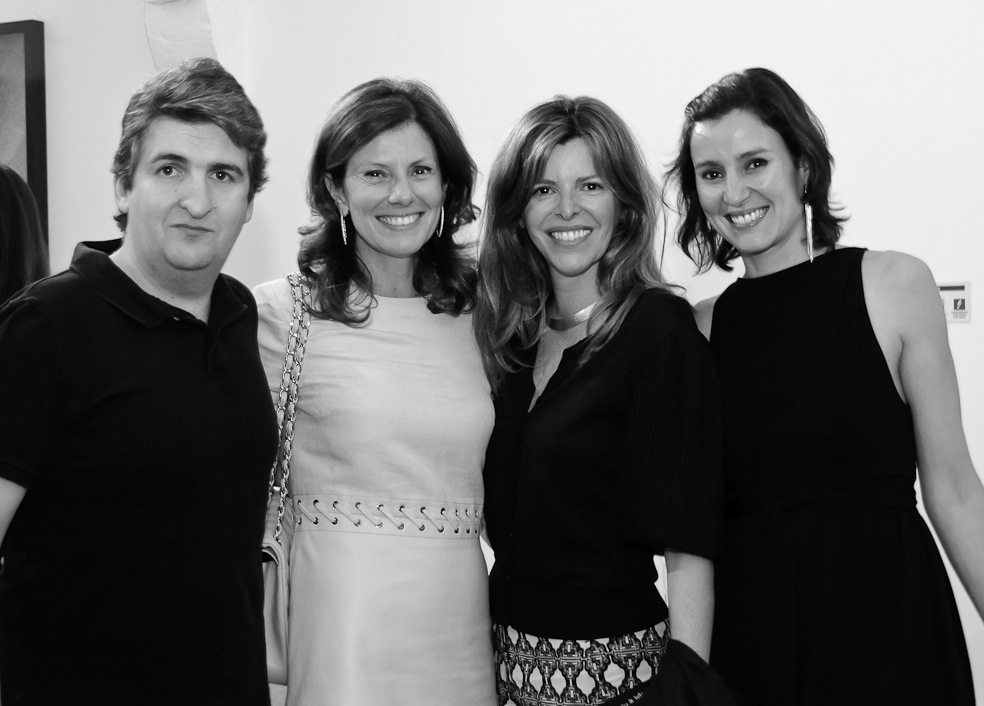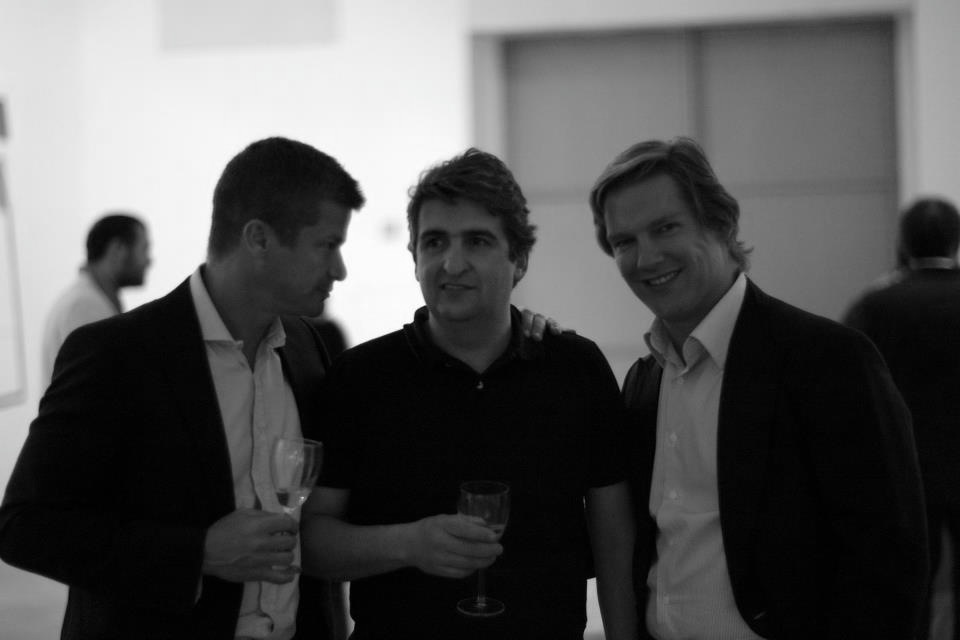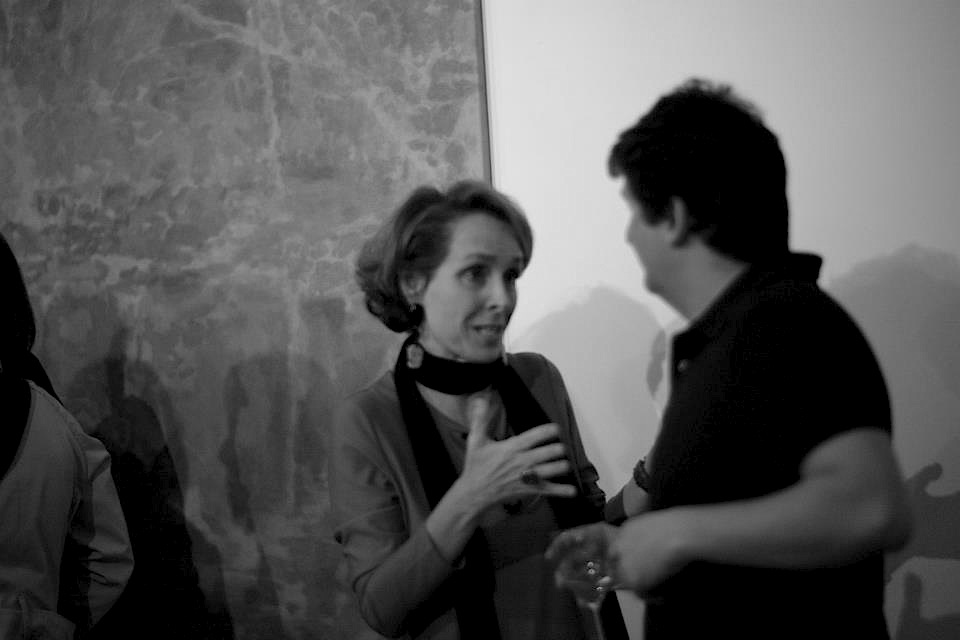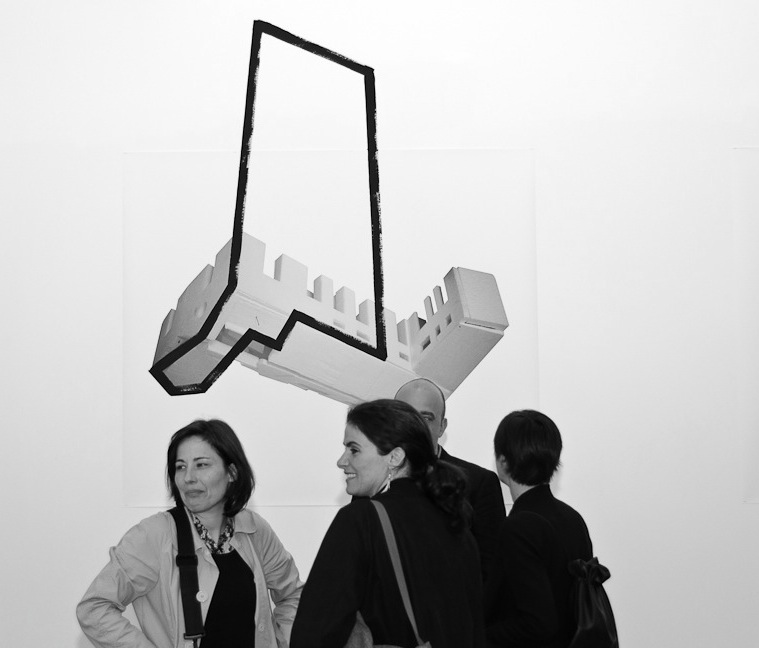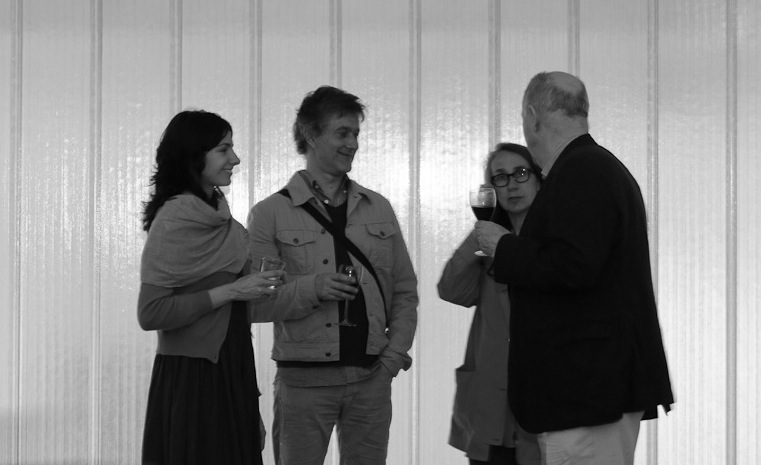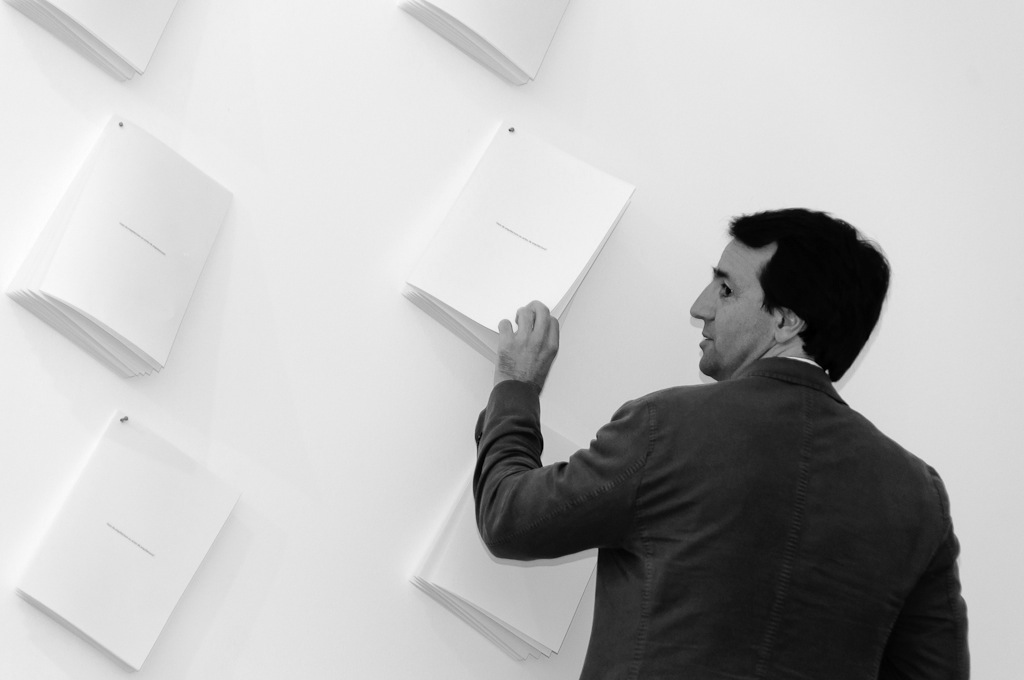2013 rebuild_01 + persona_12_17_39_52 | Baginski Gallery | Lisbon
project projectLINK | Arte institute Tomaz Hipólito interview
Architectural uses or architectural acts?
Tomaz Hipólito trained as an architect, yet, we would not rush to define is work as architecture. Architecture is more like a scenario, almost as a gridded backdrop, essential to perceive the movements across the field, or better said, fields. That might be a more productive way to prospect on Tomaz’s relation with architecture. He doesn’t perform ordinary or prescribed architectural acts or actions, he does not design, or build, or transforms in a more or less permanent way our physical surroundings. Instead of performing architecture, Tomaz performs with the tools of architecture’s trade.
He uses design strategies to erect moving bridges across mediums and places. When a drawing of a volume is folded and becomes a three-dimensional object, in a folded anamorphosis, the codes of architecture are complicated, spinning omnidirectionally or in reverse. In fact, going from images to objects is the conventional movement that organizes the production of architecture. Architects make designs, and these designs are made into buildings. Tomaz uses this more or less organized fiction of the correspondences of architecture as a matrix to register the displacement his work produces. Designs are never structured as final conformations but as sets of operations, of actions, that organize their materialization. Design should organize space as well as the time of this becoming, the process of its determination. Tomaz goes for some inside trading with this knowledge to complicate the aftermath of this essentially performative construction of architecture: its use, the manner in which the performance of everyday unfolds in architecture.
Most of Tomaz’s work stages and witnesses his relation with buildings and landscapes, and sometimes with buildings so big that blur the line between object and landscape, like the famous man made top of New York’s world, the rooftop of the Chrysler Building. Access, permission to travel through legal and economical boundaries, is actually one of the “materials” Tomaz requires for his projects. And once close to the sky in a windy rooftop or trap in an empty floor of a famous tower or a vacant loft – mostly places observed in a state of suspended function – he does not simply survey, he measures with performance. Tomaz’s images witness the playful mischief of a an anonymous character, himself generically dressed in a single color.
This temporary character inhabits these suspended spaces. Architecture is literally played. The small fringes in the regular use of these buildings are expanded into a play of architecture, into a mise-en-abíme. A series of images denounce this transgression, this trespassing, a very personal appropriation of space, the invention of an opportunity to experience notable architecture. Maybe Tomaz is still as curious about space as any architect. Along the play of architecture, Tomaz also gains access to those places in which architects play themselves: famous architecture studios, like Steven Holl’s in New York, the birth place of museums like the Kiasma in Helsinki, the Nelson-Atkins in Kansas city, or the precious and ever changing façade of StoreFront for Art and Architecture in New York. Once again an anonymous character dressed in black (like a real architect) morphs with the environment. This part of Tomaz’s work elicits architect’s voyeuristic curiosity. How architects stage their work space? How they organize their files? Can we look over their shoulders while they invent space? This presence of a generic character does not translate to space, conversely, the more generic the character that uses these spaces, the more detailed the attention is, the more specific these spaces become. Playing these spaces does not make them pop; the white noise of the play of anonymous characters paradoxically singularizes them, returns them strange enough for a new engagement.
Another part of Tomaz’s work deals with the contrast between the vast expanse of the landscape and his intimate experience of it. The usual anonymous character plays its absent play in some the of most rarified, inhospitable and yet glamorous landscapes of North America, its deserts. The wide open arms engaging the desert recall the very delicate freedom experienced by Reyner Banham riding his bike in the desert: Swinging in wider and wider circles or going head down for ever-retreating horizon, the salt whispers under one’s wheels and nothing else is heard at all but those minute mechanical noises of the bike that are normally drowned out by other traffic. Swooping and sprinting like a skater over the surface of Silurian Lake, I came as near as ever to a whole-body experience equivalent to the visual intoxication of sheer space that one enjoys in America Deserta. The awkwardness of the soft intrusion of Tomaz’s character also recall the well-known image that illustrates Banham’s experience: an hirsute and graying cowboy rides a bicycle the size of a pony with too tall handlebars attached directly to the tiny frame. One can almost laugh at the sight of both images, Banham’s and Tomaz’s, but then the intensity of the intimate experience of freedom and derailment is a warning that the irony might be on us.
Lisbon 2013 Joaquim Moreno
2013 rebuild_01 Baginski Gallery, Lisbon
Presented by Baginski Gallery
Exploring in order to deconstruct
The work presented by Tomaz Hipólito at Baginski, Galeria/ Projectos, draws a reflection upon architecture related subjects, using parallel and complementary disciplinary points of view. Photography, drawing, installation, sculpture, video and text, are combined according to a deeply performative practice, towards a research about space.
2013 rebuild_01 Baginski Gallery, Lisbon
Presented by Baginski Gallery
The artist’s body emerges as the prime medium of mapping and experimentation of the gallery’s space. This use of the body as measure is not equipped by a sense of site-specificity, but rather oriented through a specific approach of spatial experimentation, embraced within the exhibition’s room own physical premises.
The different states of conception of space here explored include from the early stage at the architect’s studio, where the artist’s body is carries out non-instrumental ways of occupation, to the intermediate approaches of the maquette and 3D visualization. The latter inscribe an autonomous spatiality from their edified counterparts, whether by virtually extending the physical space, or by incorporating several construction materials. Images of maquettes are severed and amplified according to a spatially intervening scale, adding new spaces to the already existing one. This juxtaposition is harmonized through the artist’s graphic intervention, conceiving unprecedented unfolds that result from the successive spatial interlacements. Further presentation of maquettes underlines the irony of non-planned concentration of disparate spaces, gathered into a container which defines a final moment of obsolescence.
The tools of appropriation here adopted, within the diverse expressions in which the artist resorts to, are, after all, the same as Architecture’s, developing within the range of the relationship between the body, objects – themselves extensions of the body -, with space and its surrounding. In this way, the artist’s intervention aims to explore in order to deconstruct, at the same time that discloses in order to construct new possibilities of space experimentation.
2013 Lisbon Jorge Catarino
project

